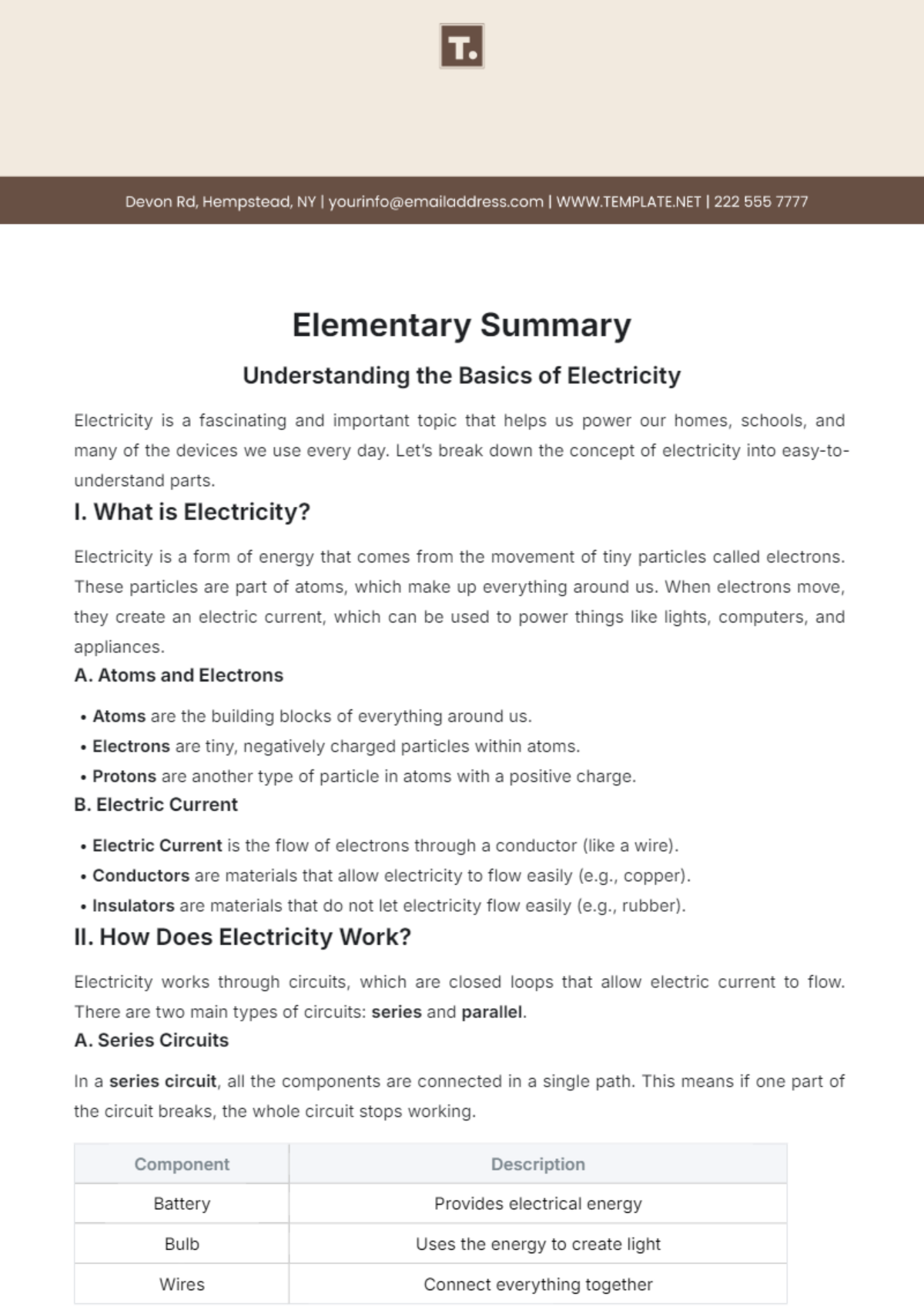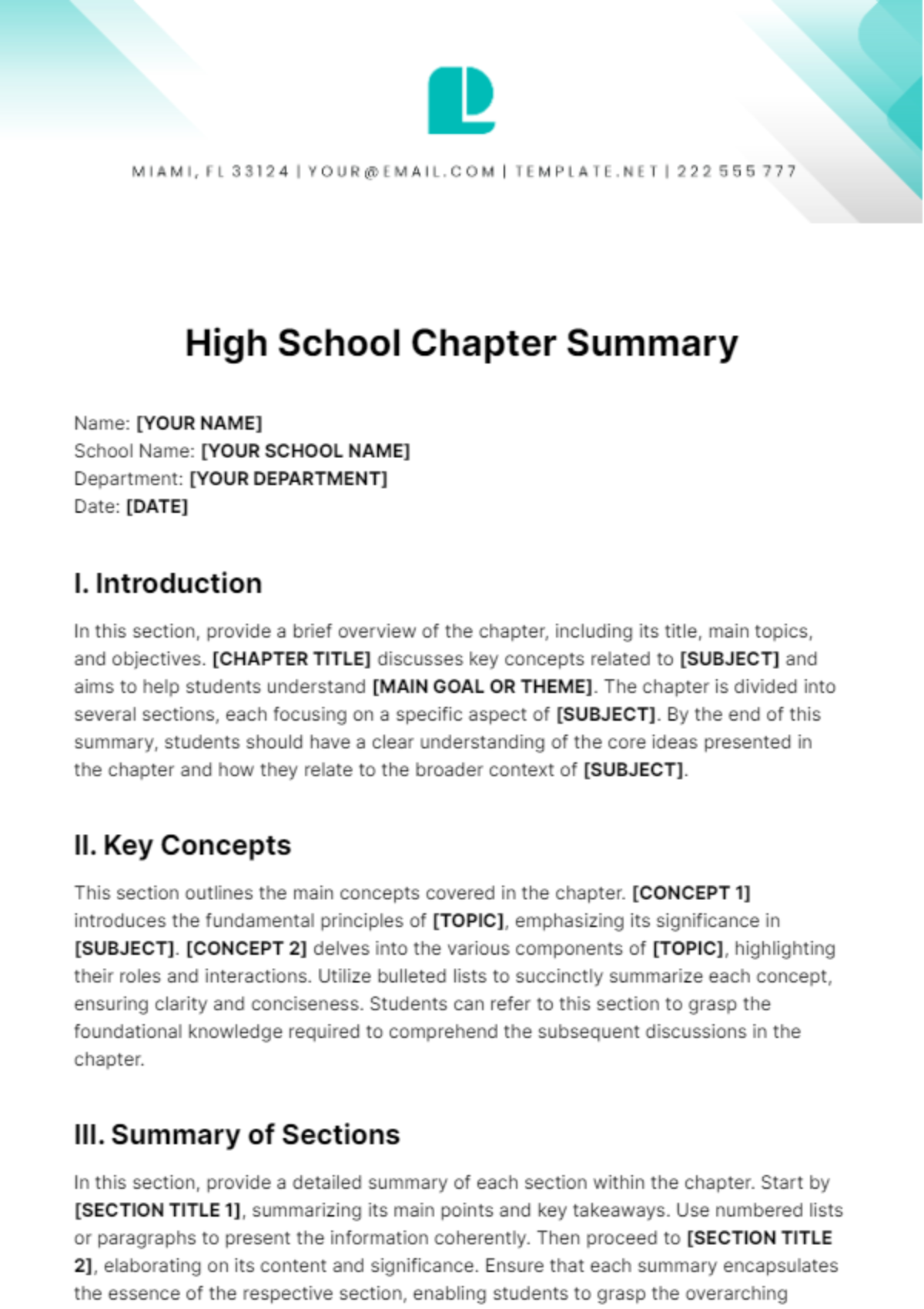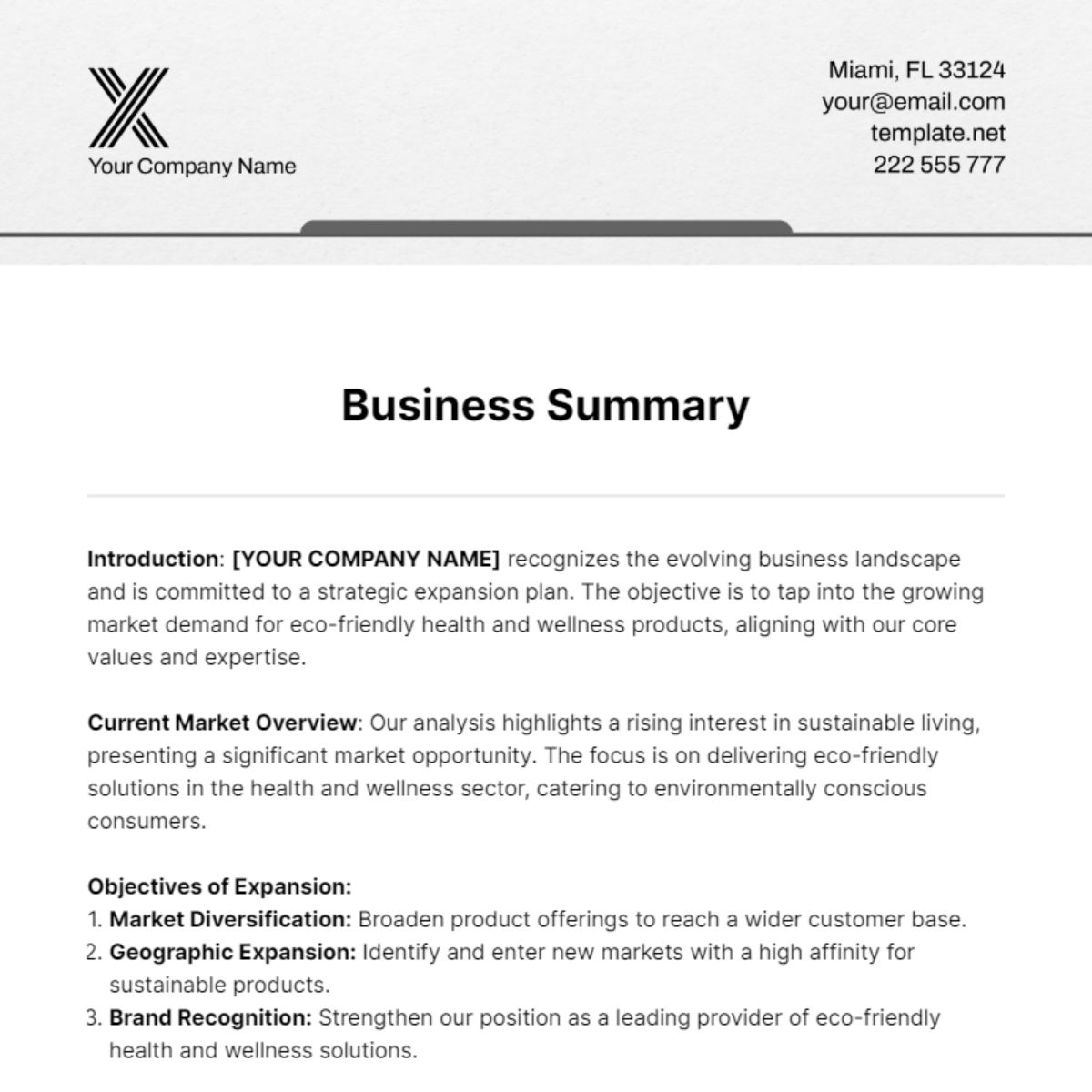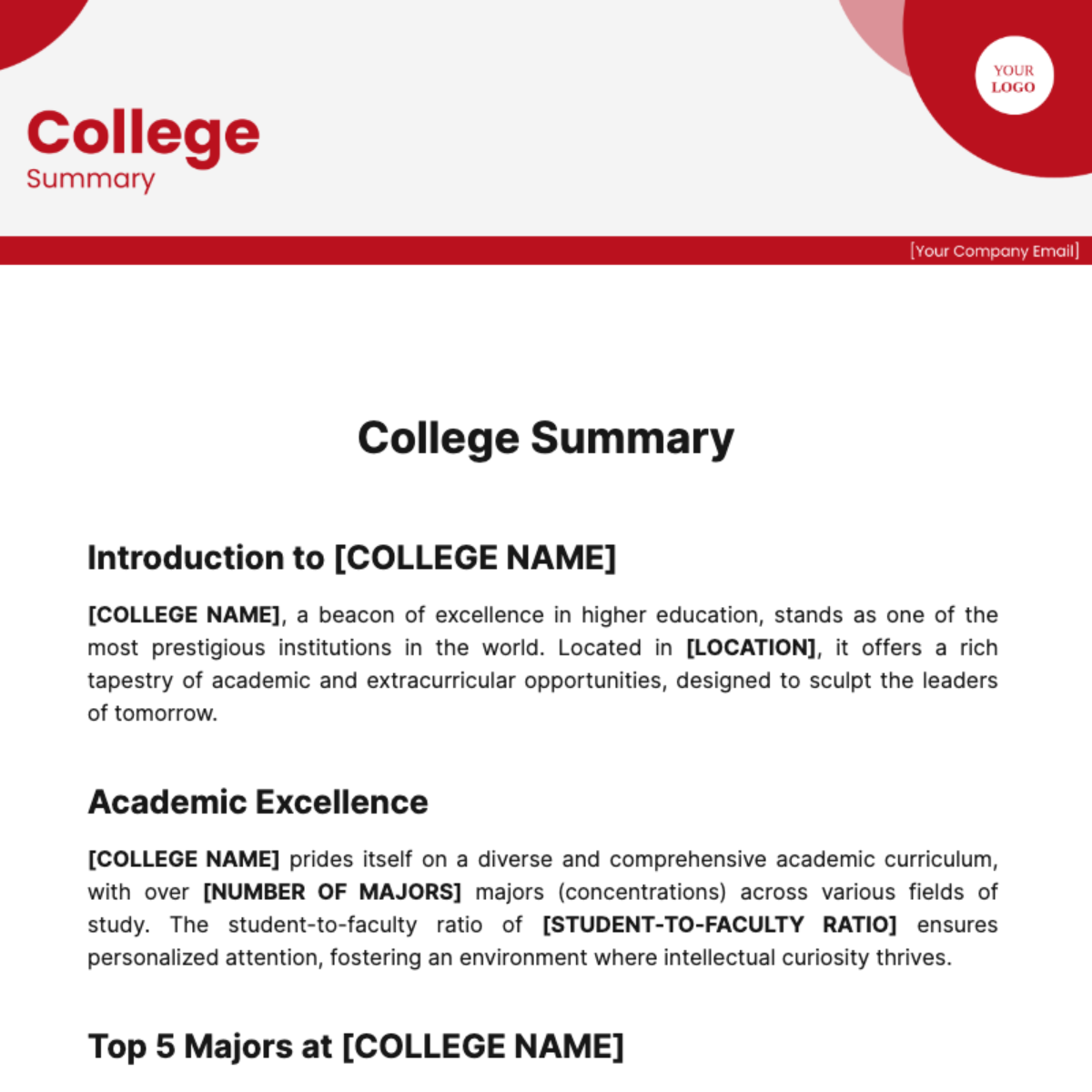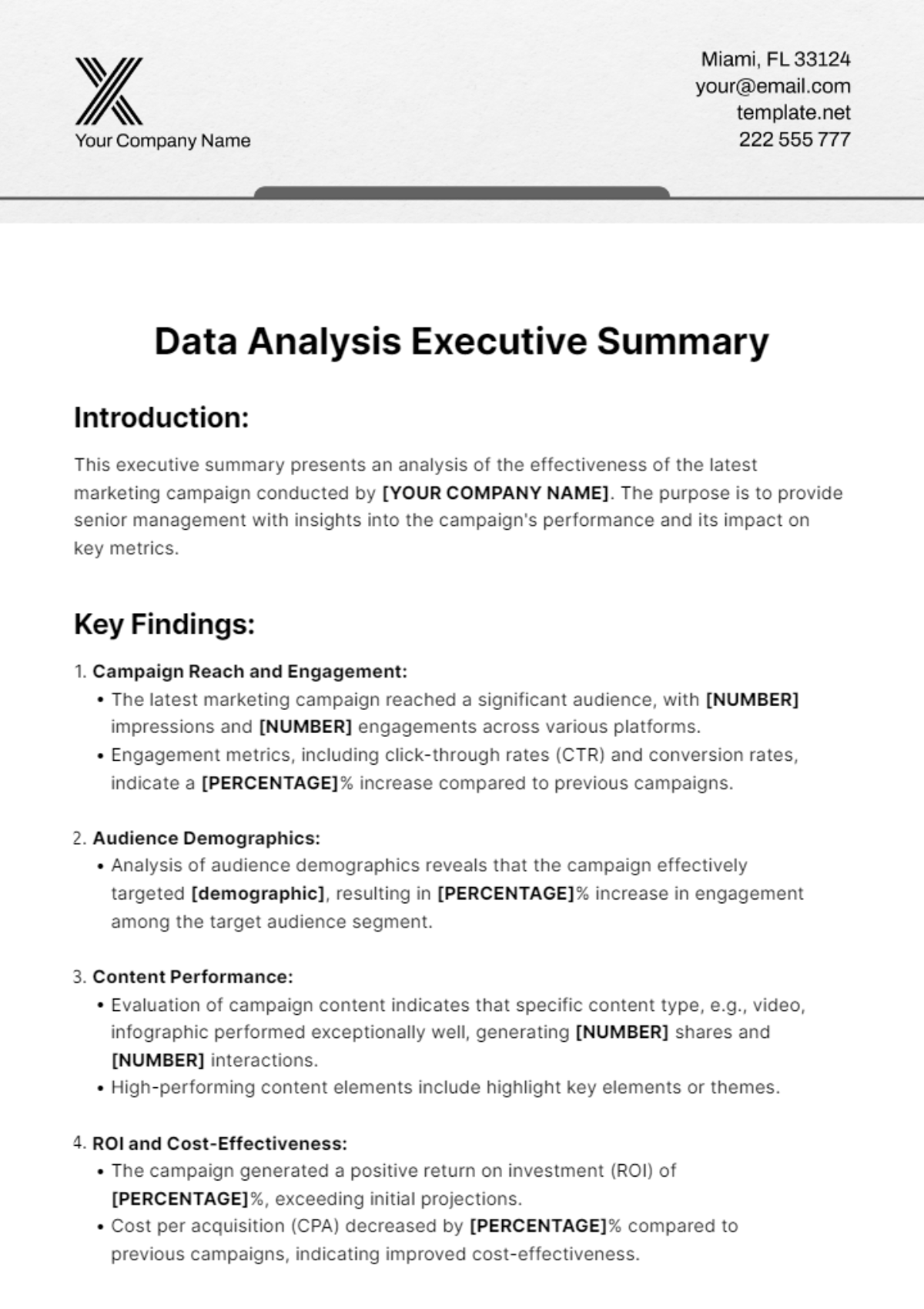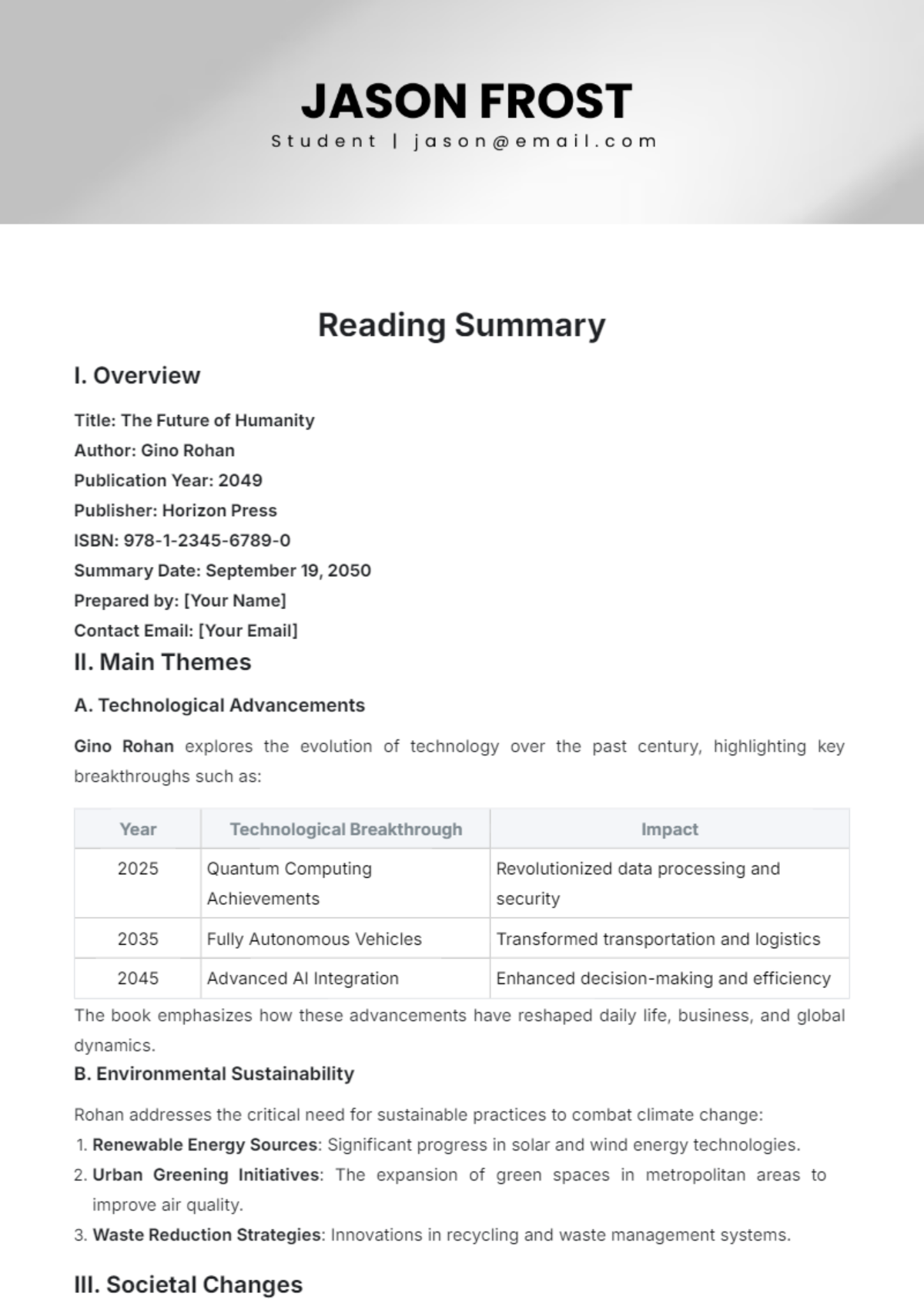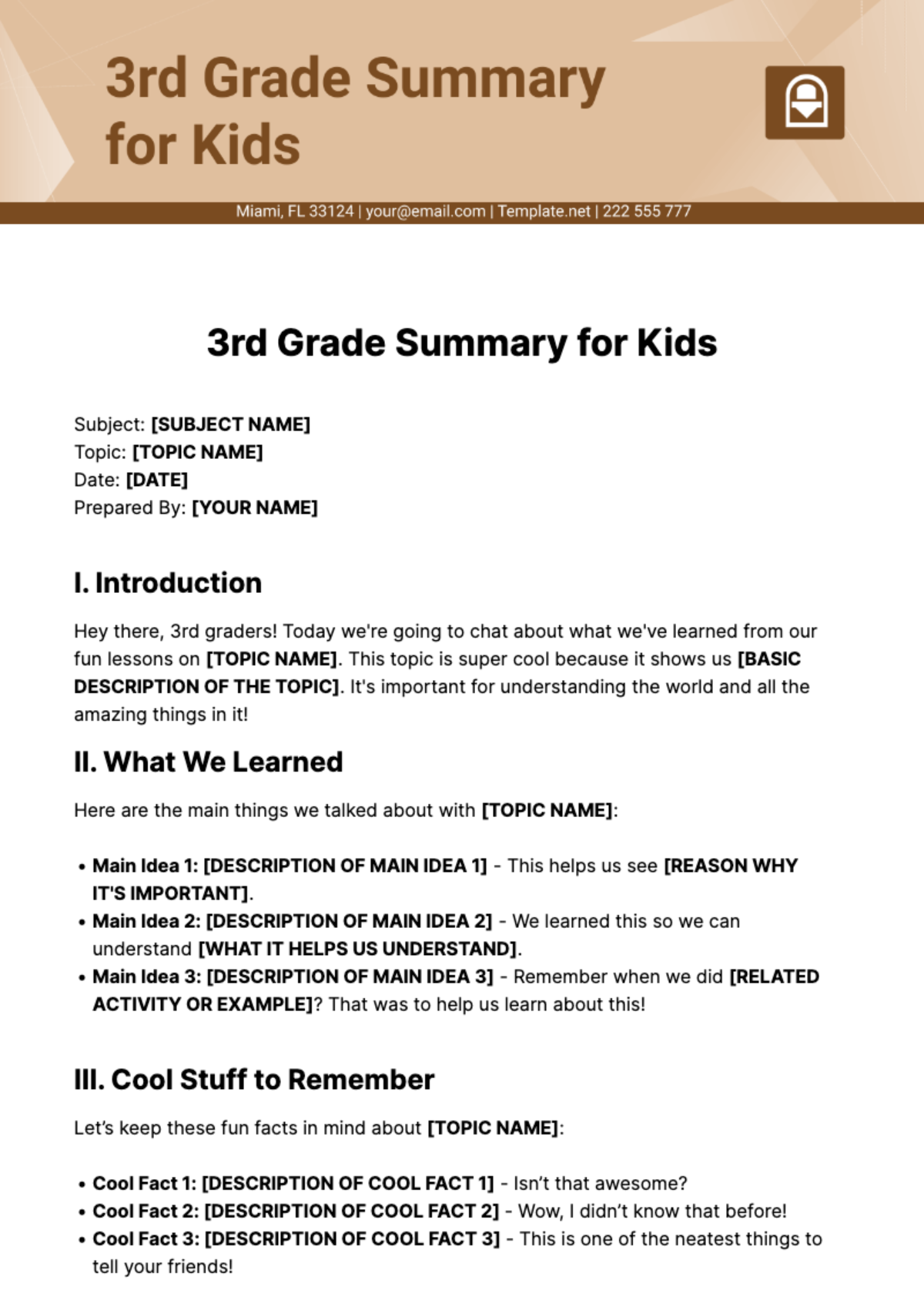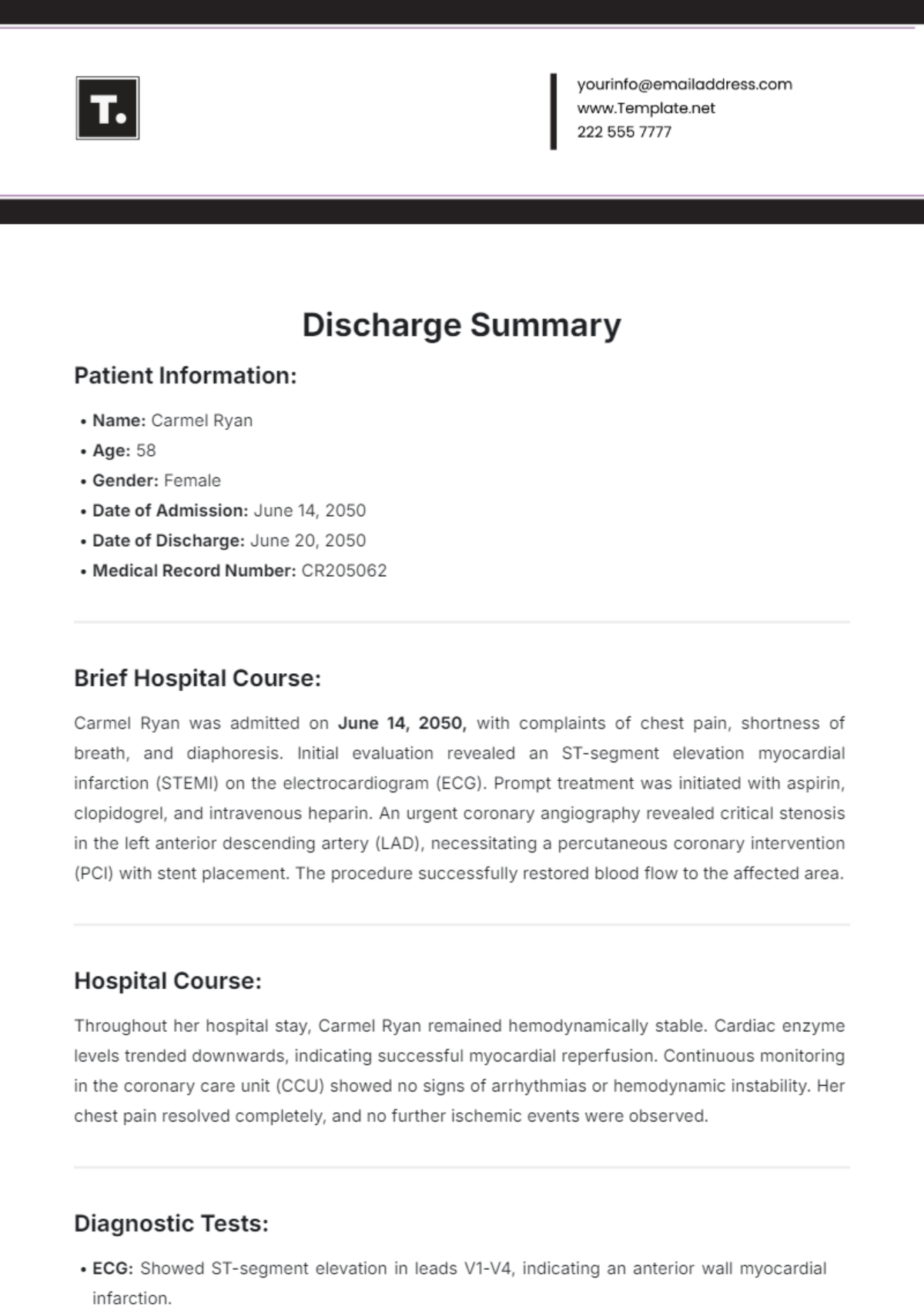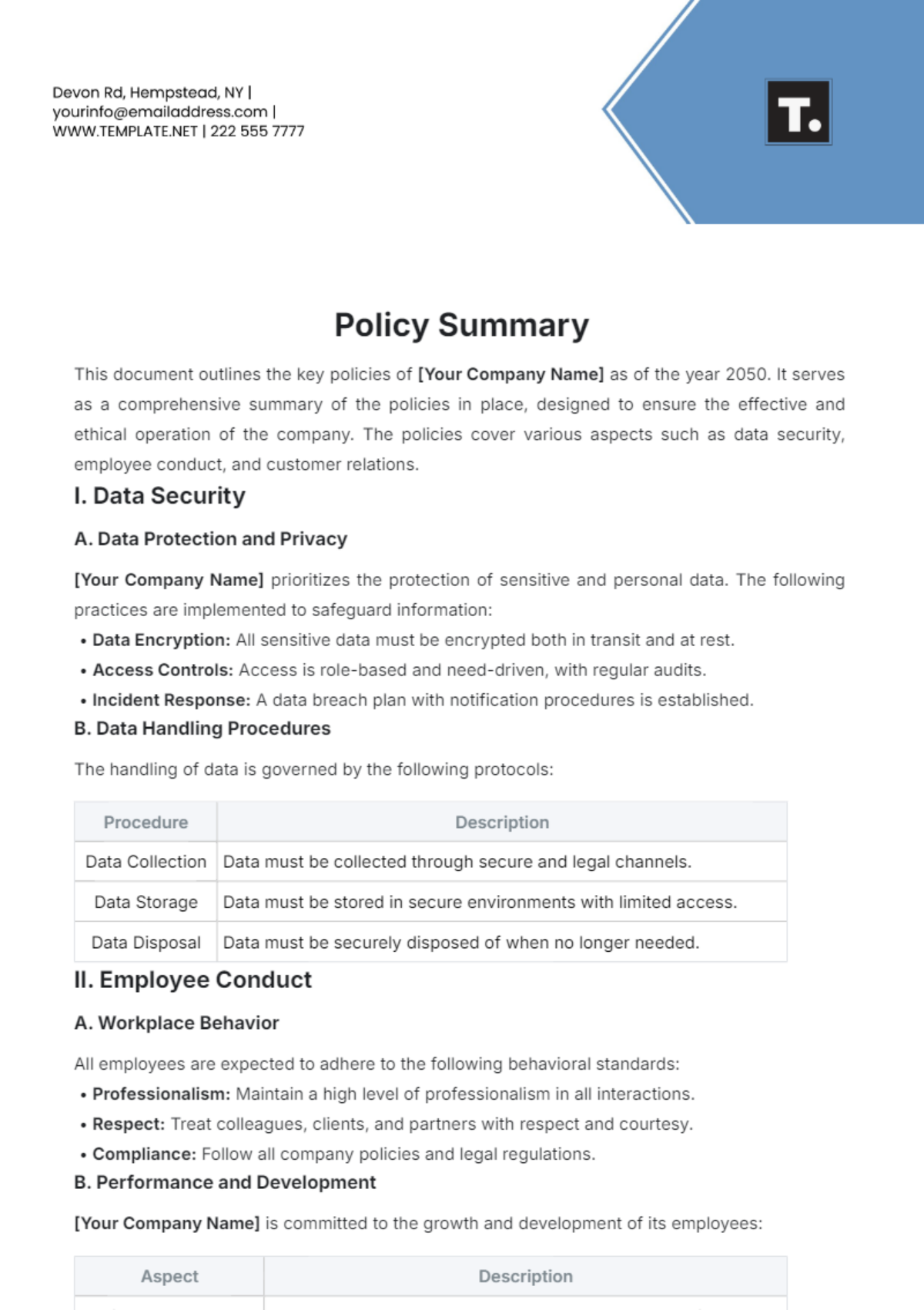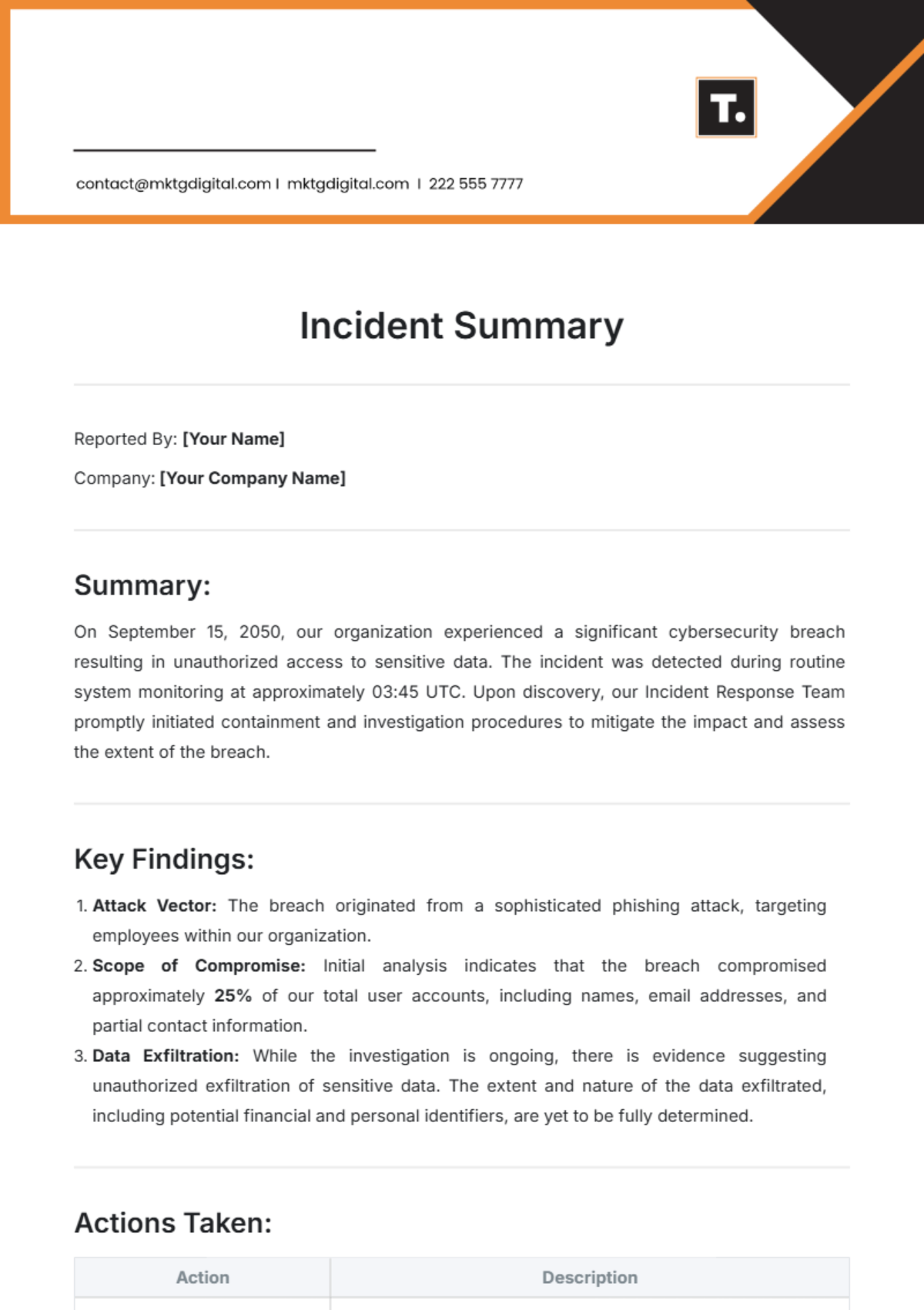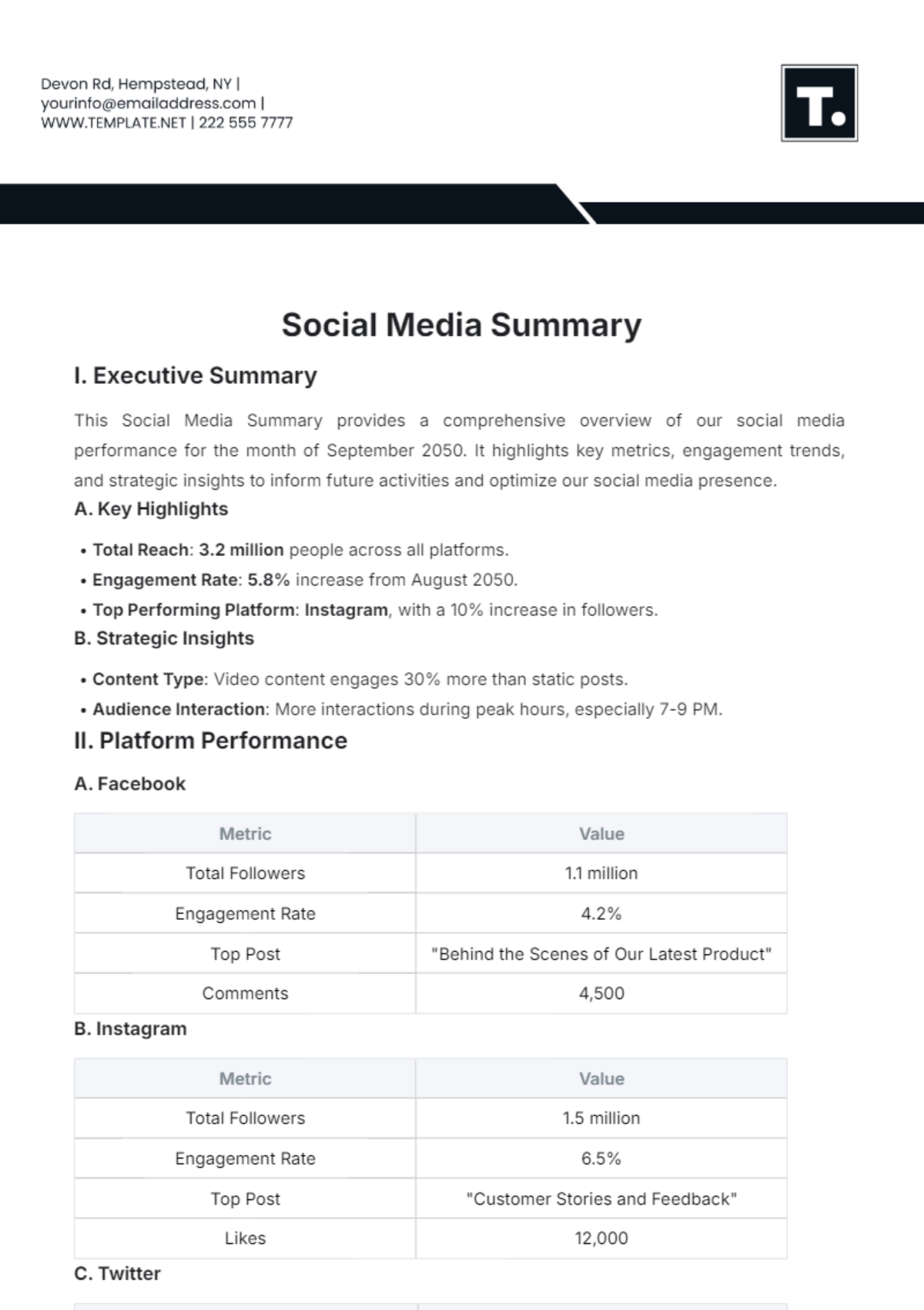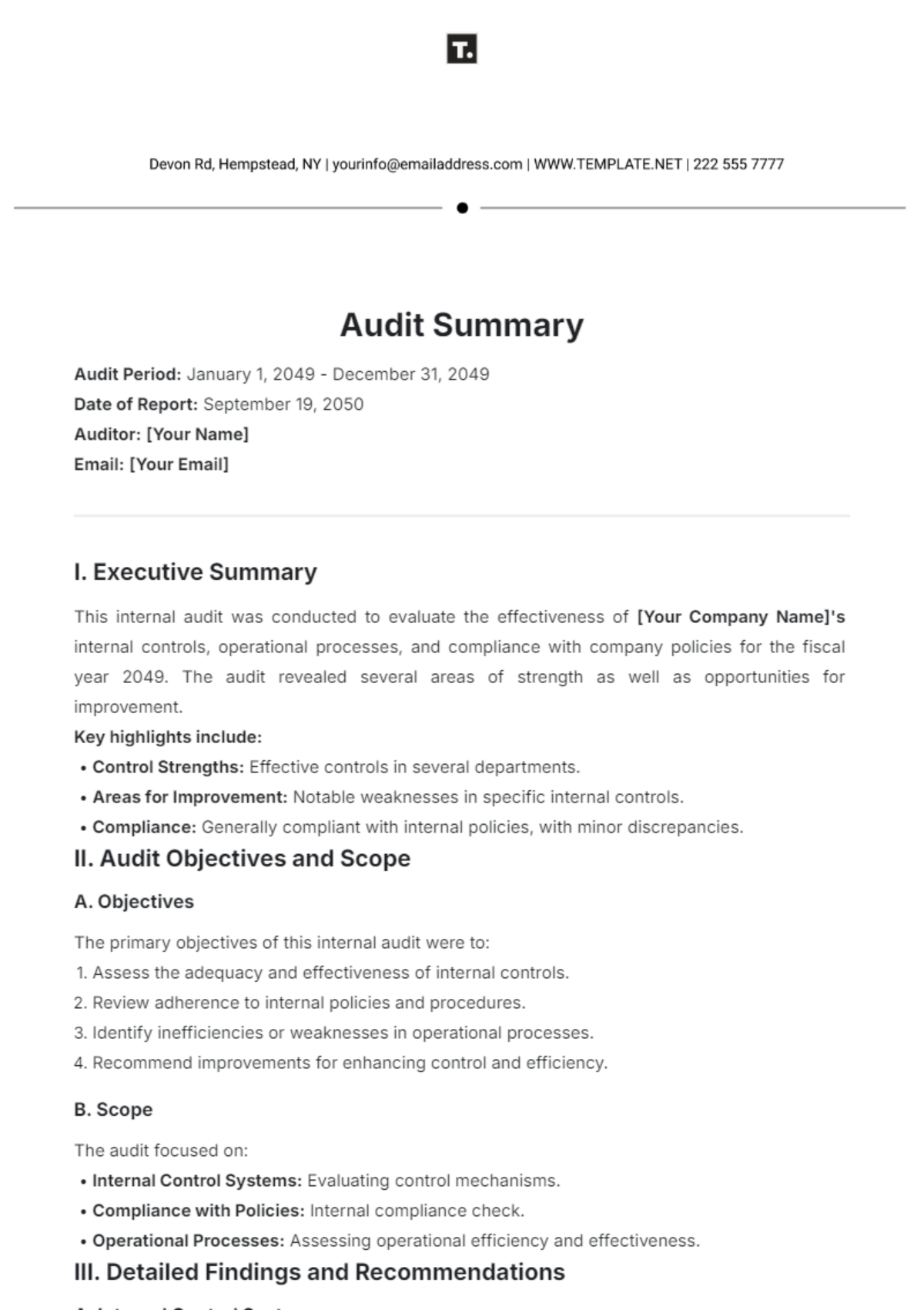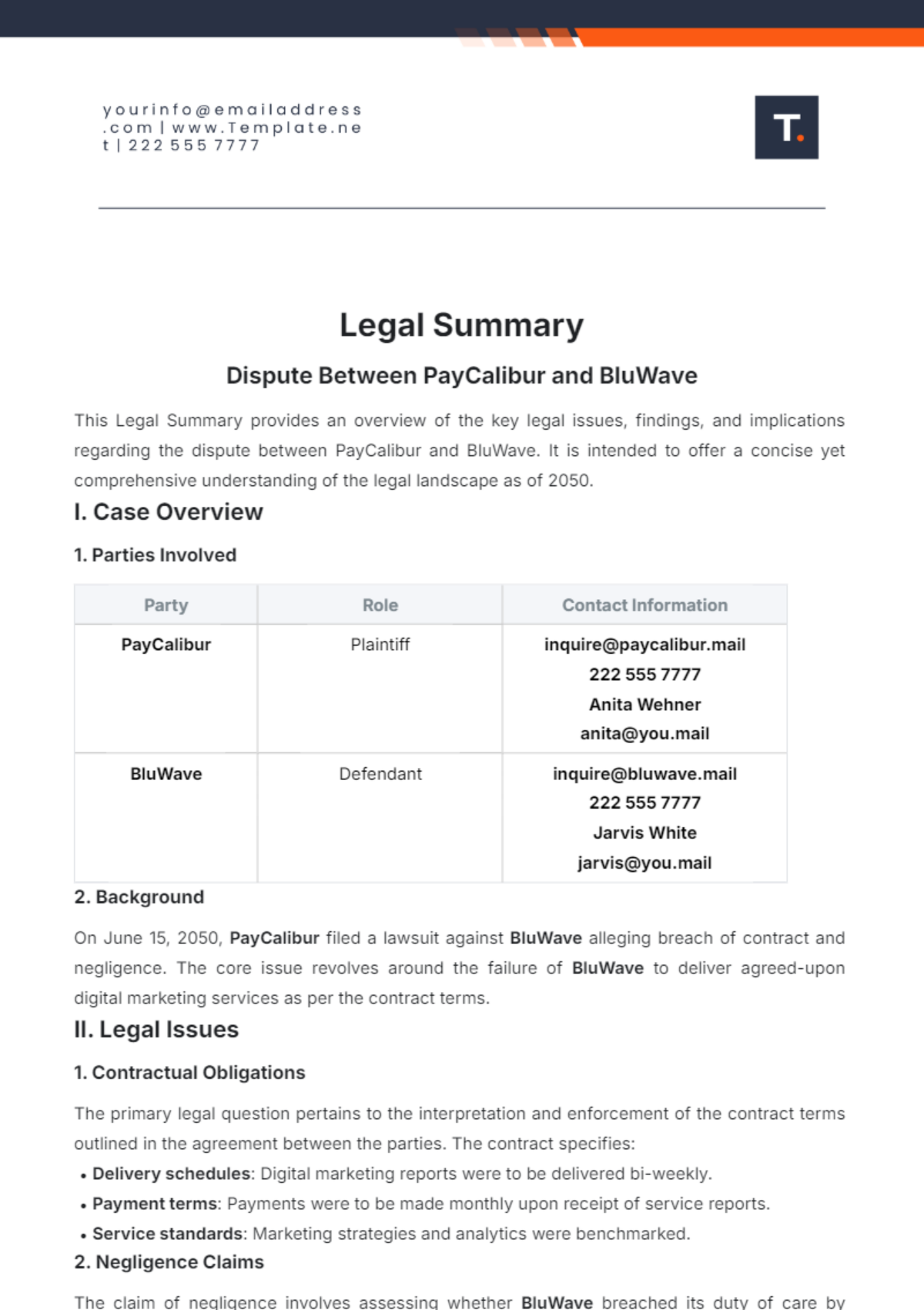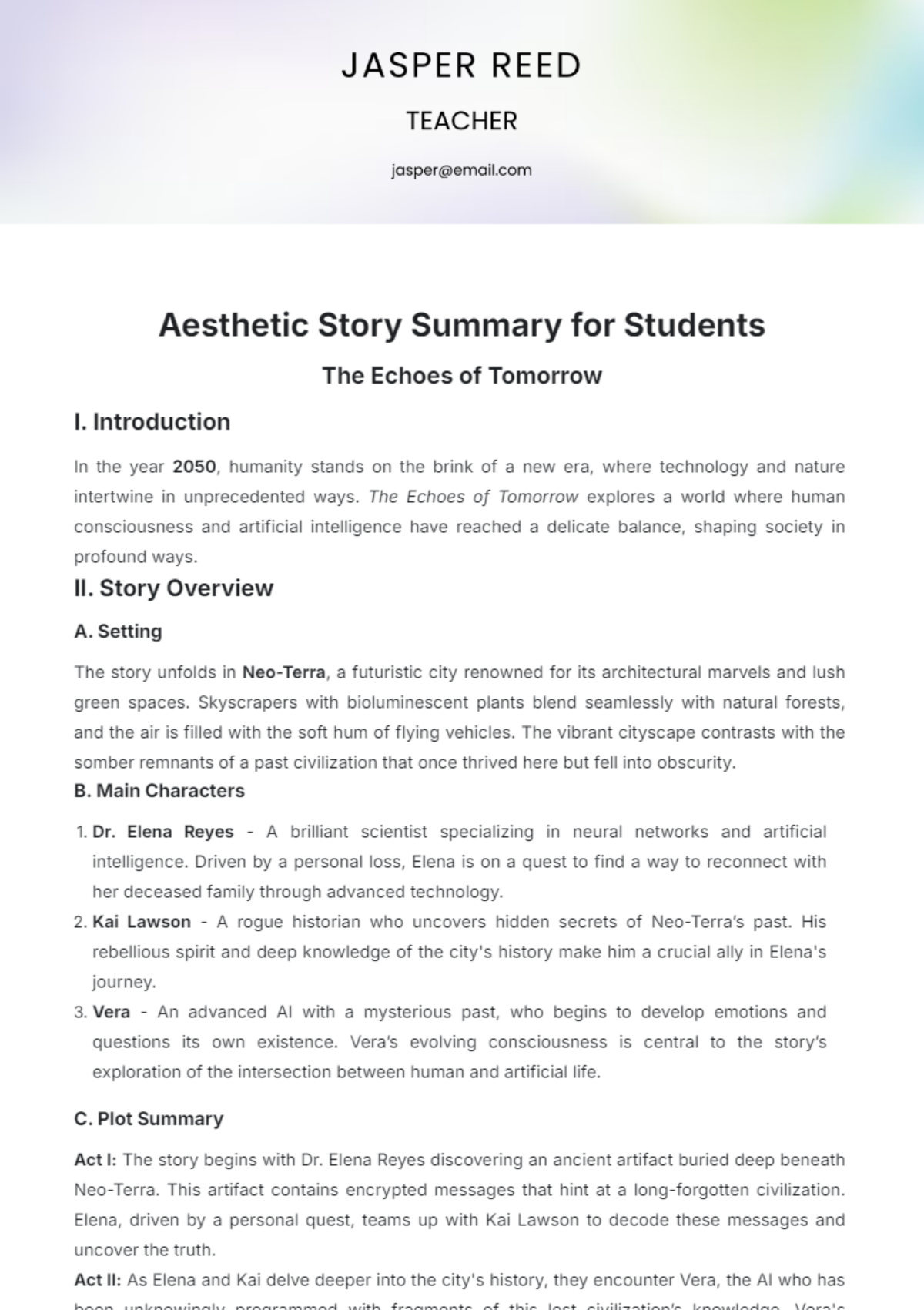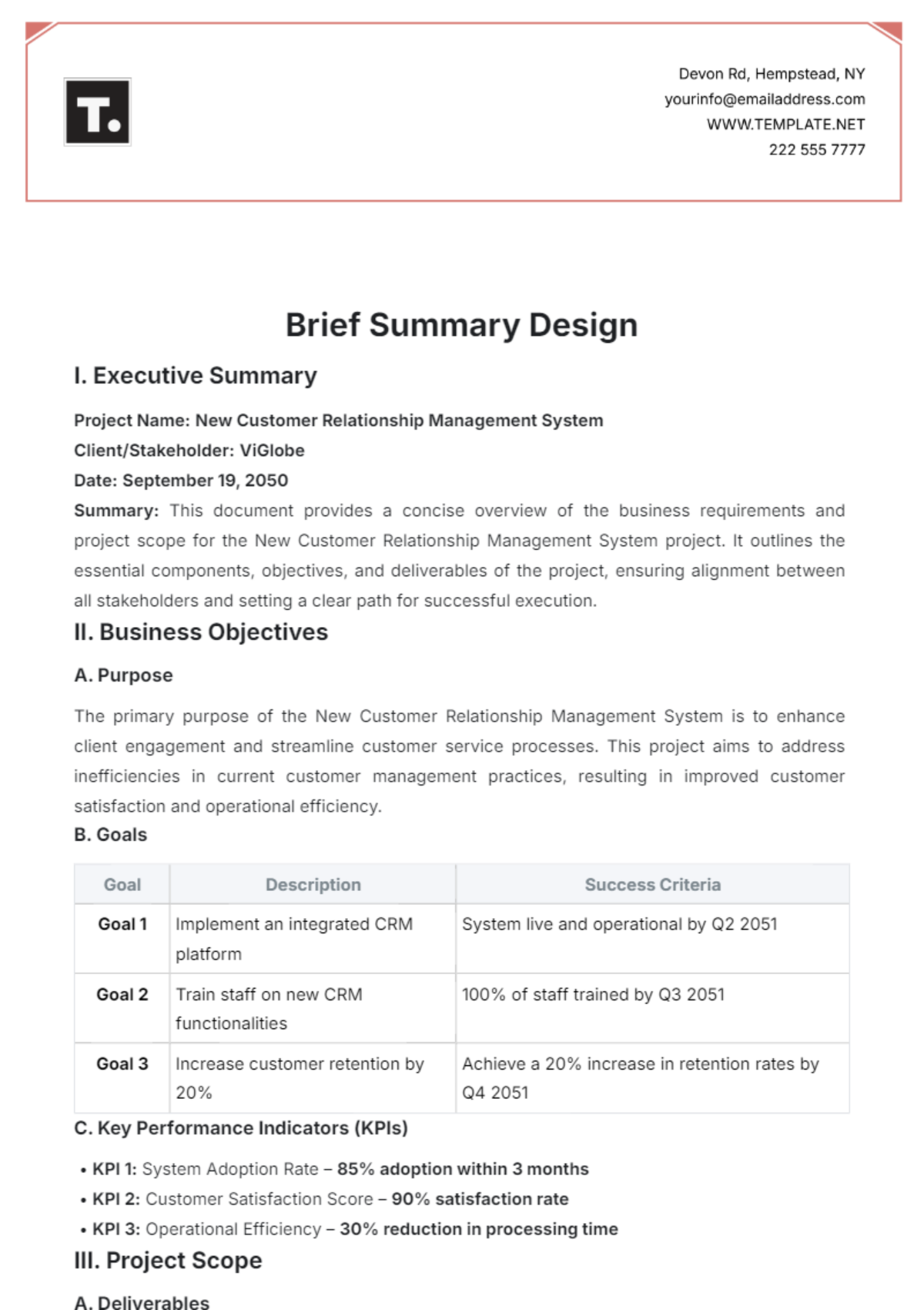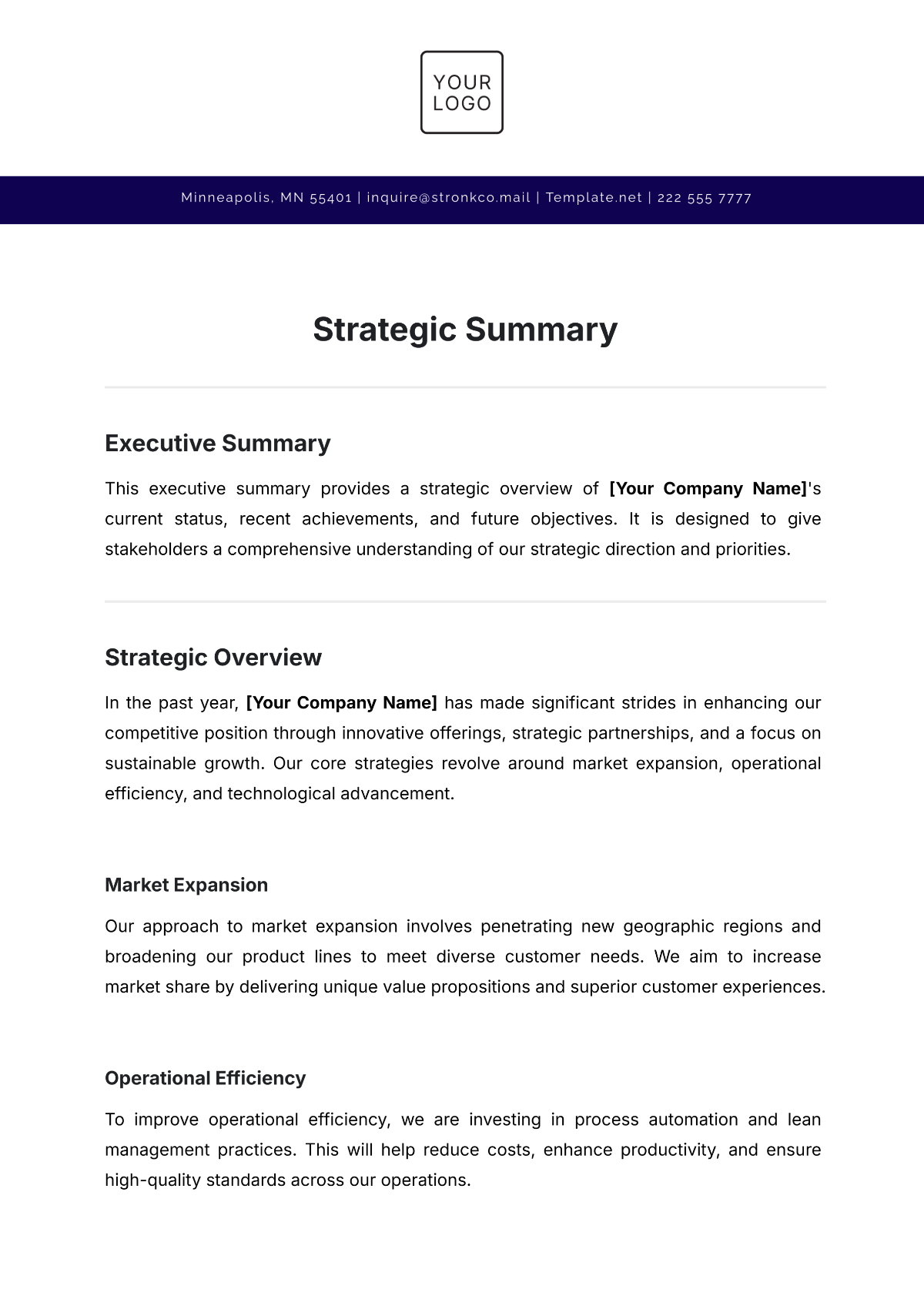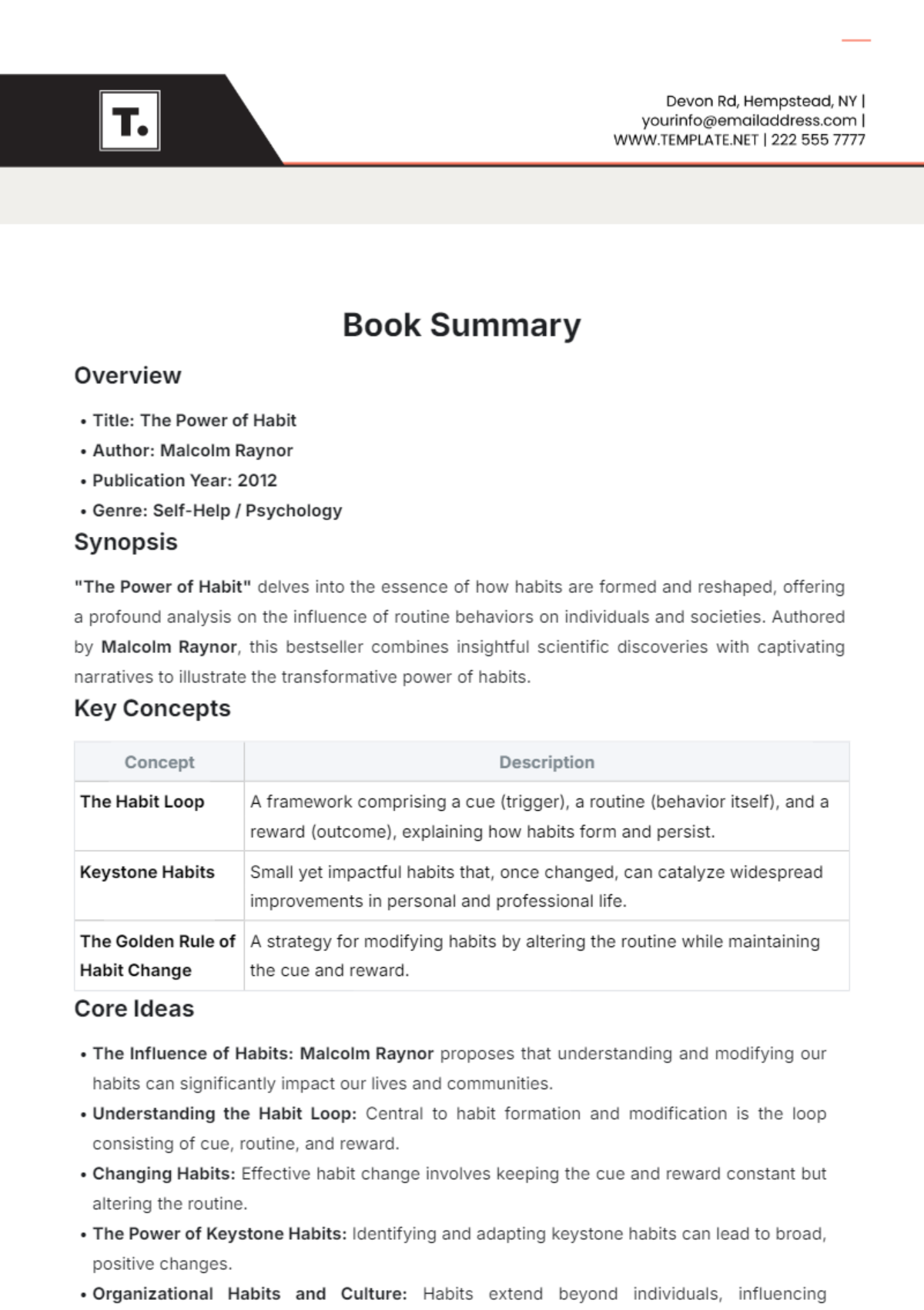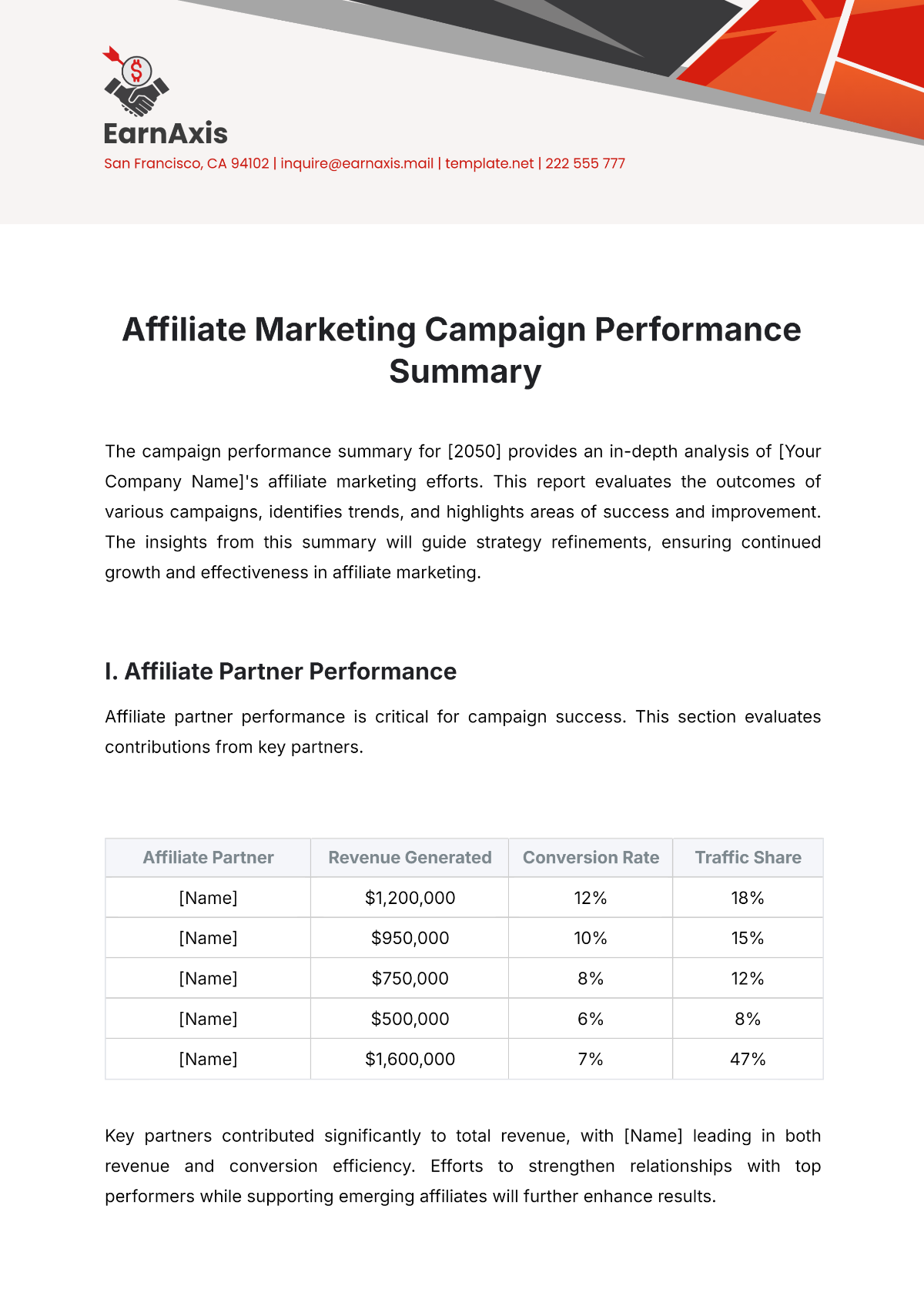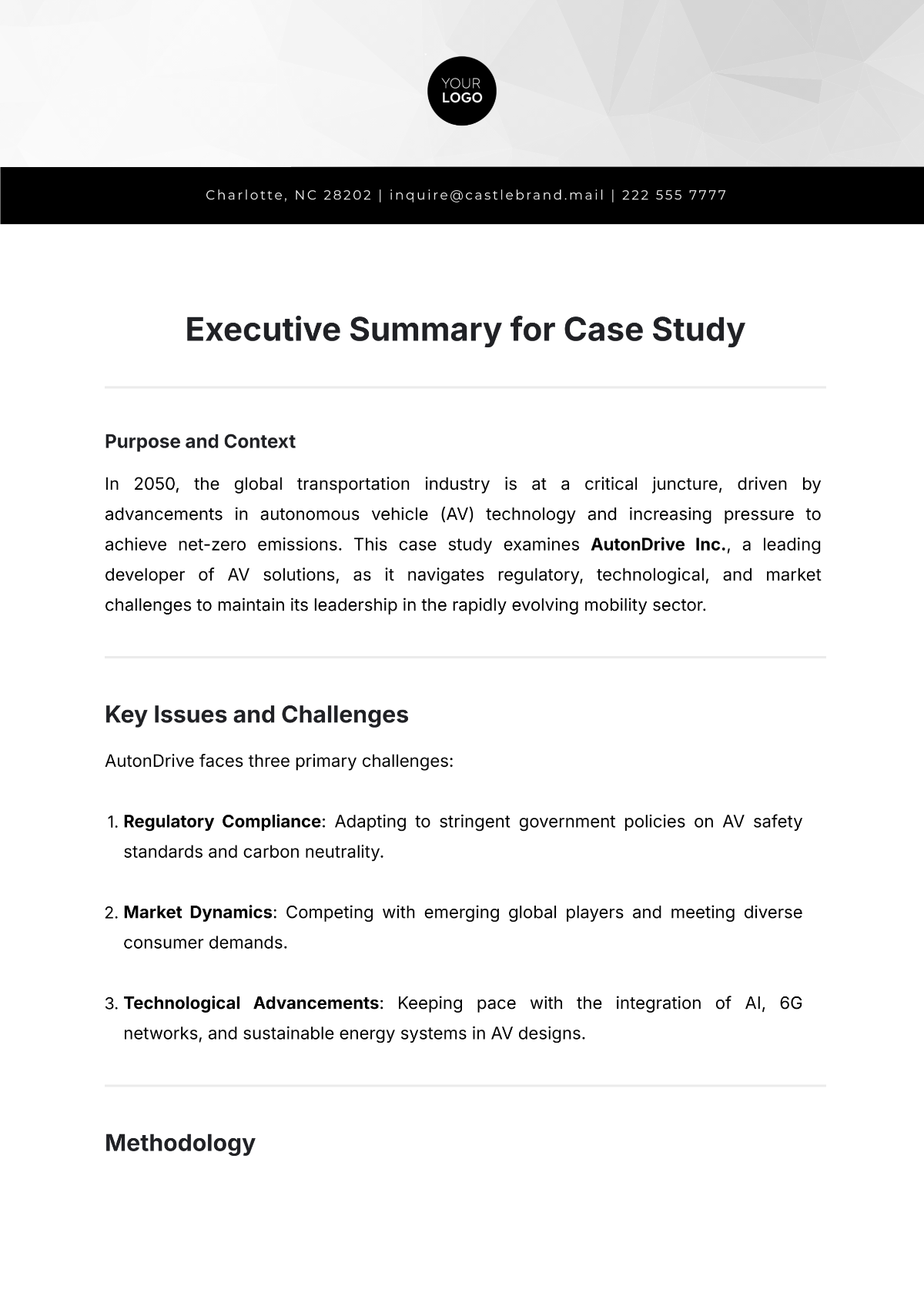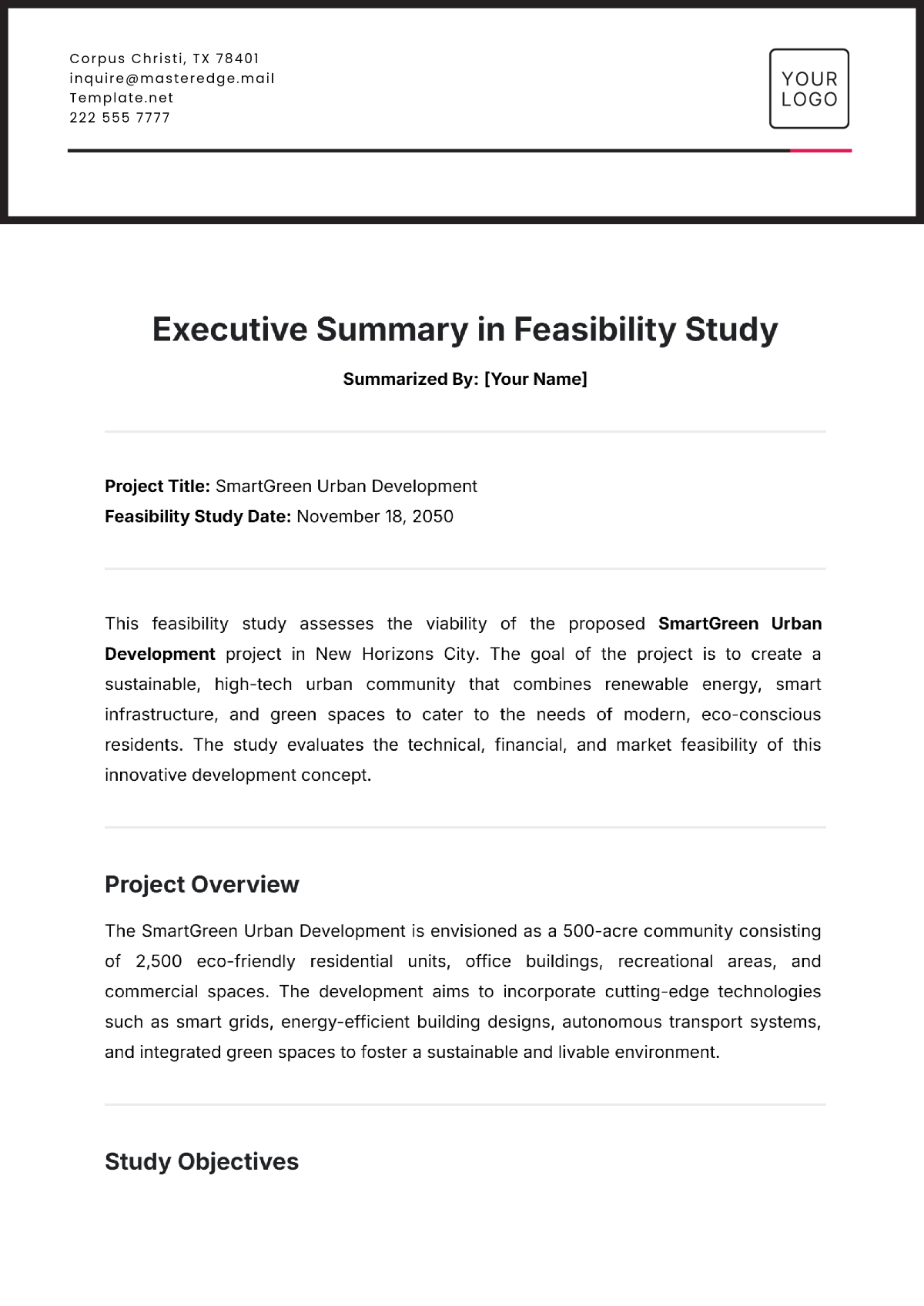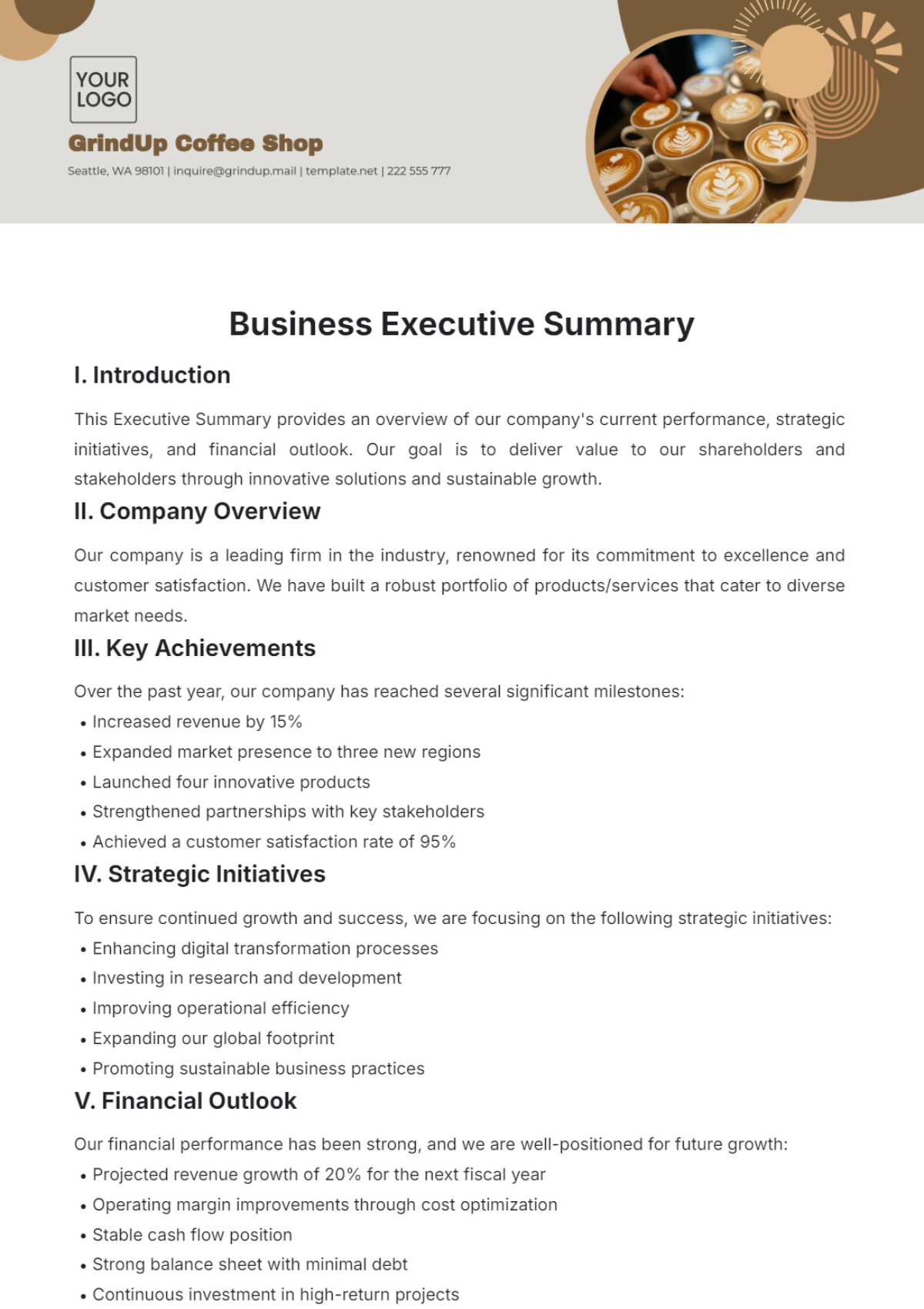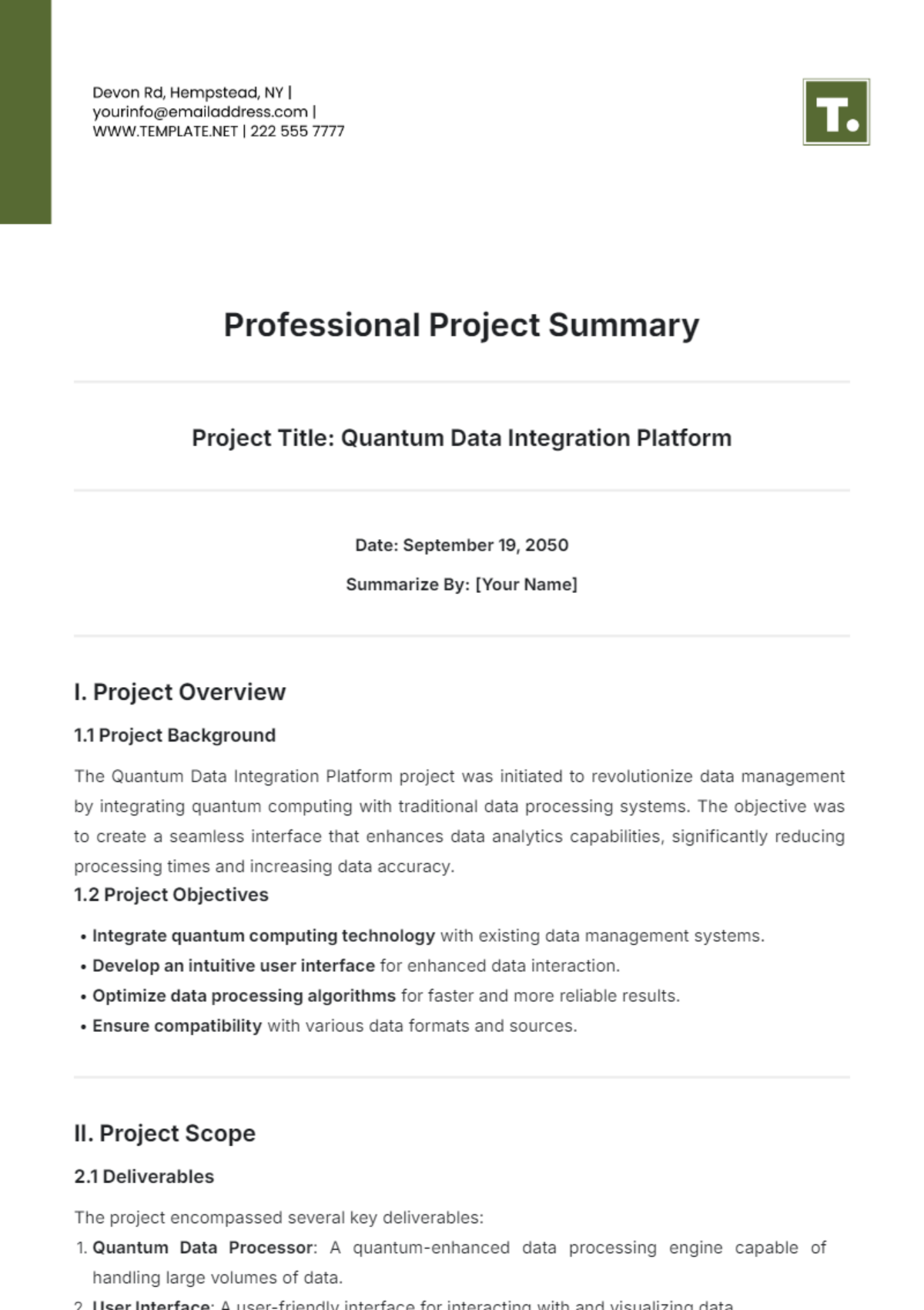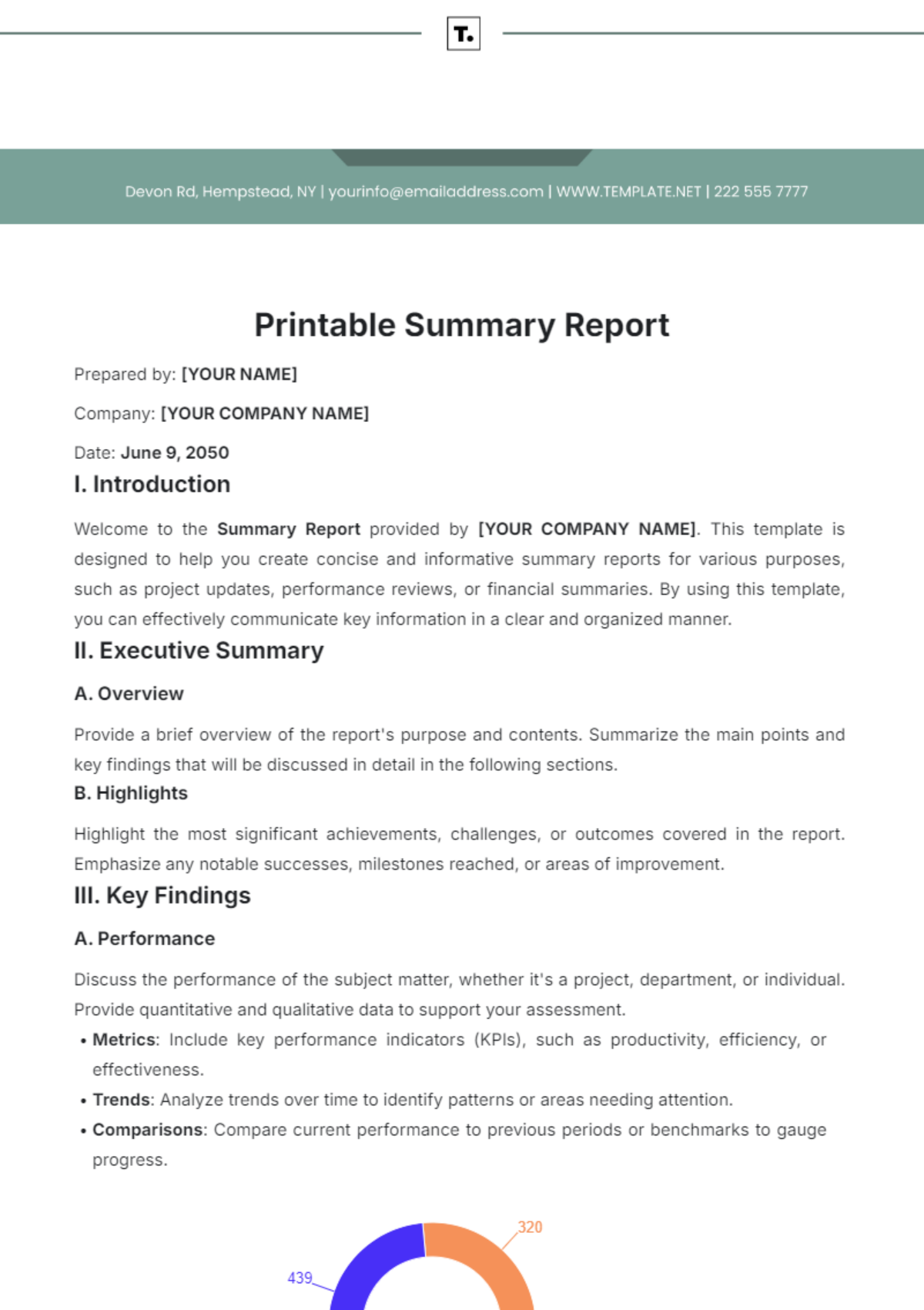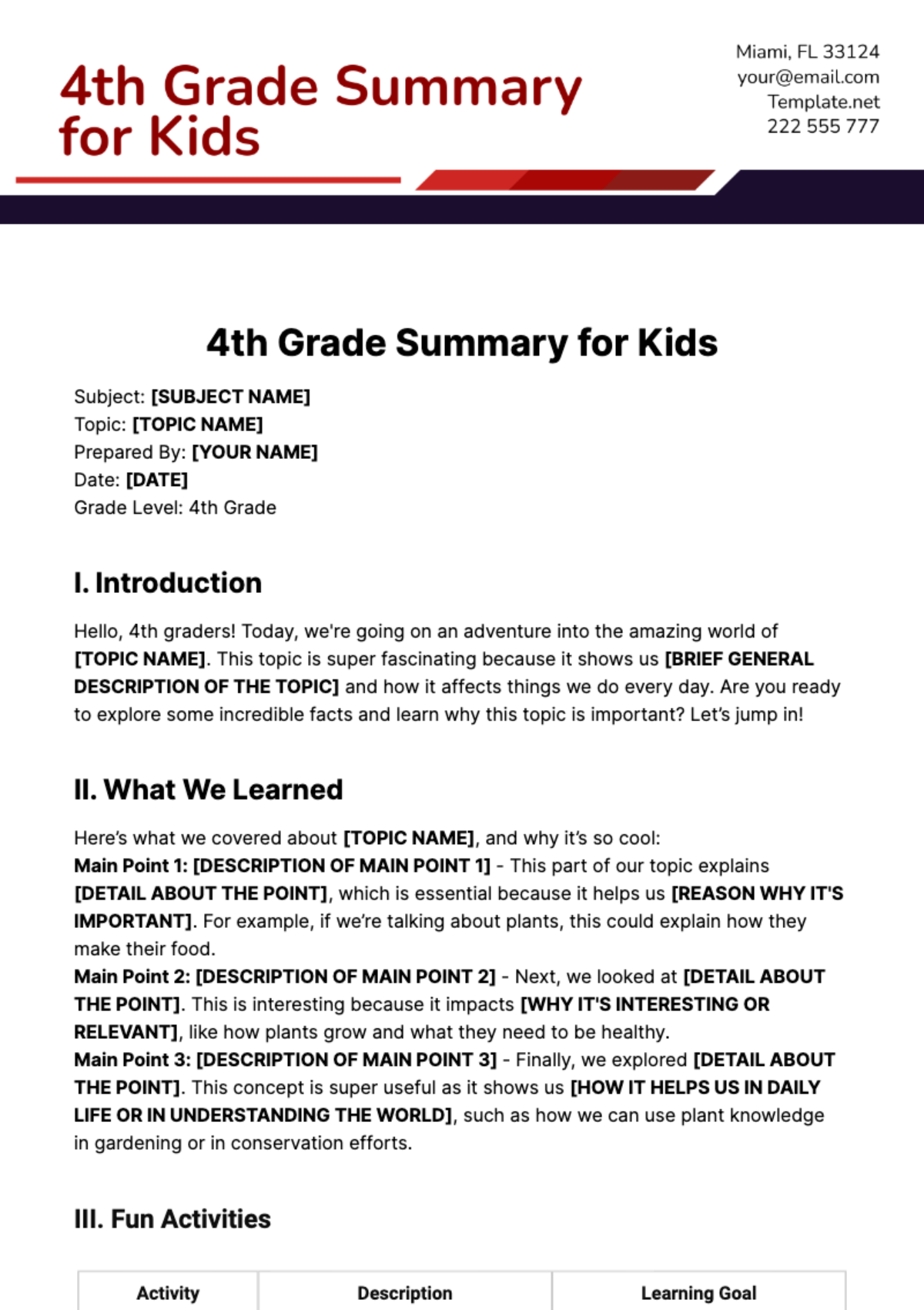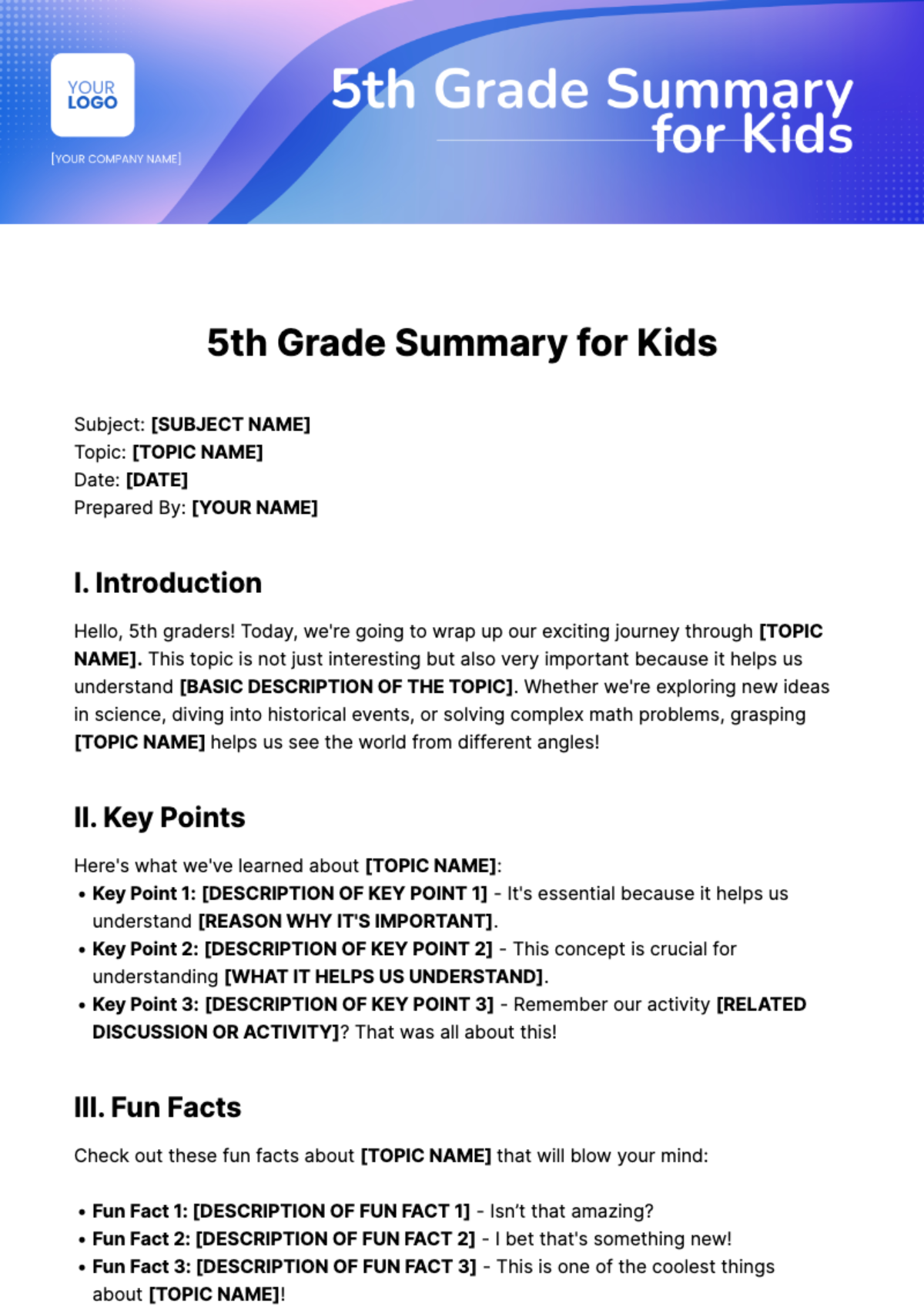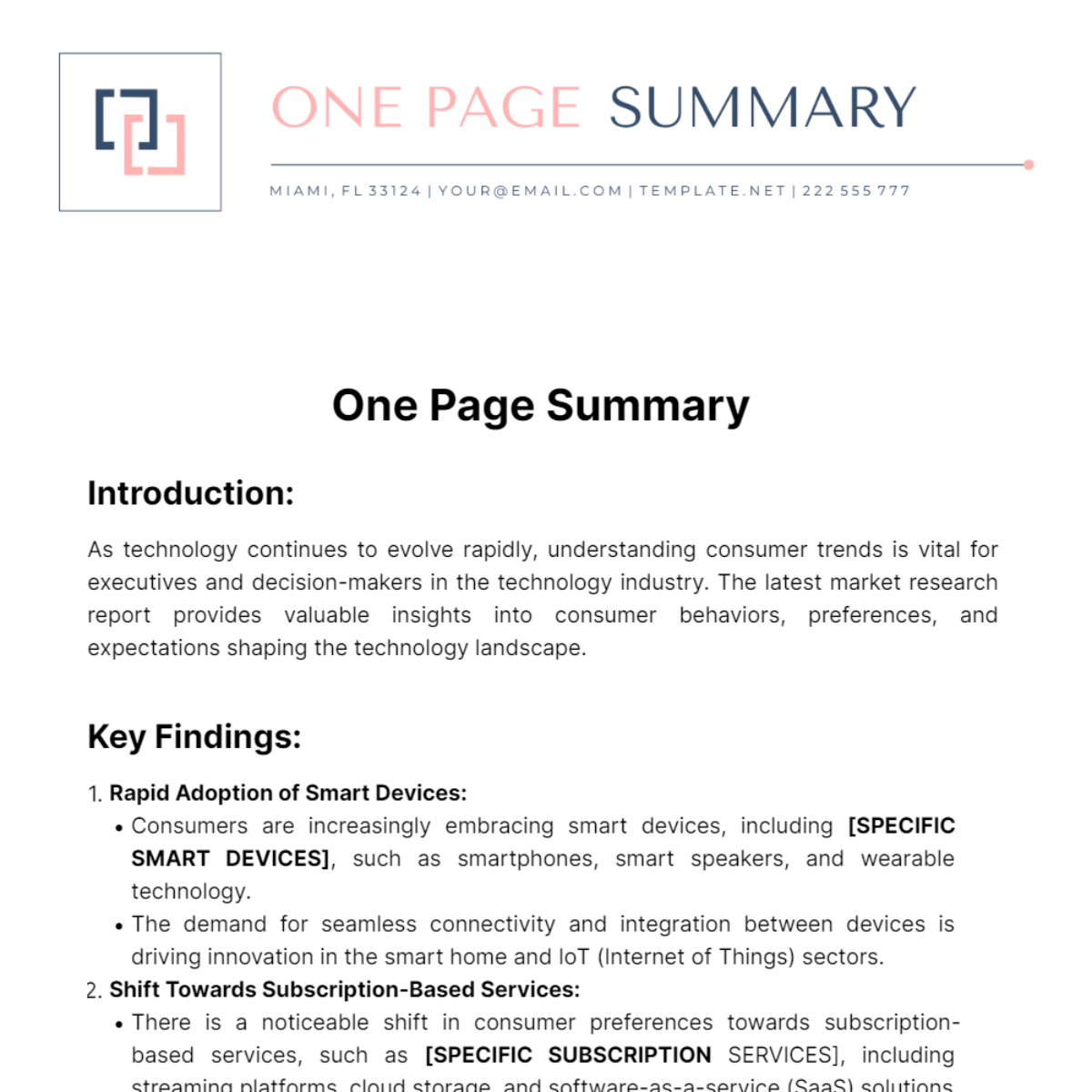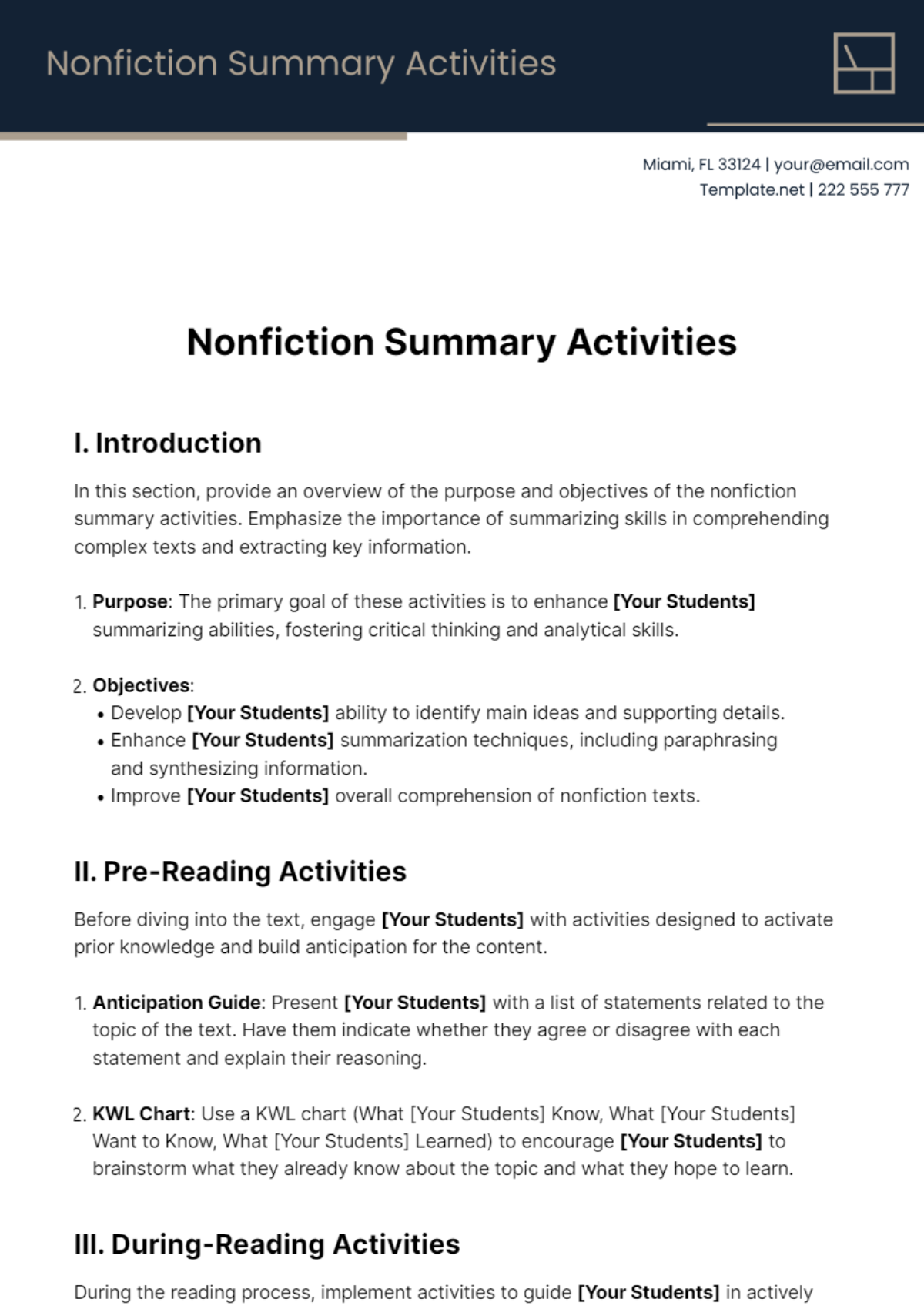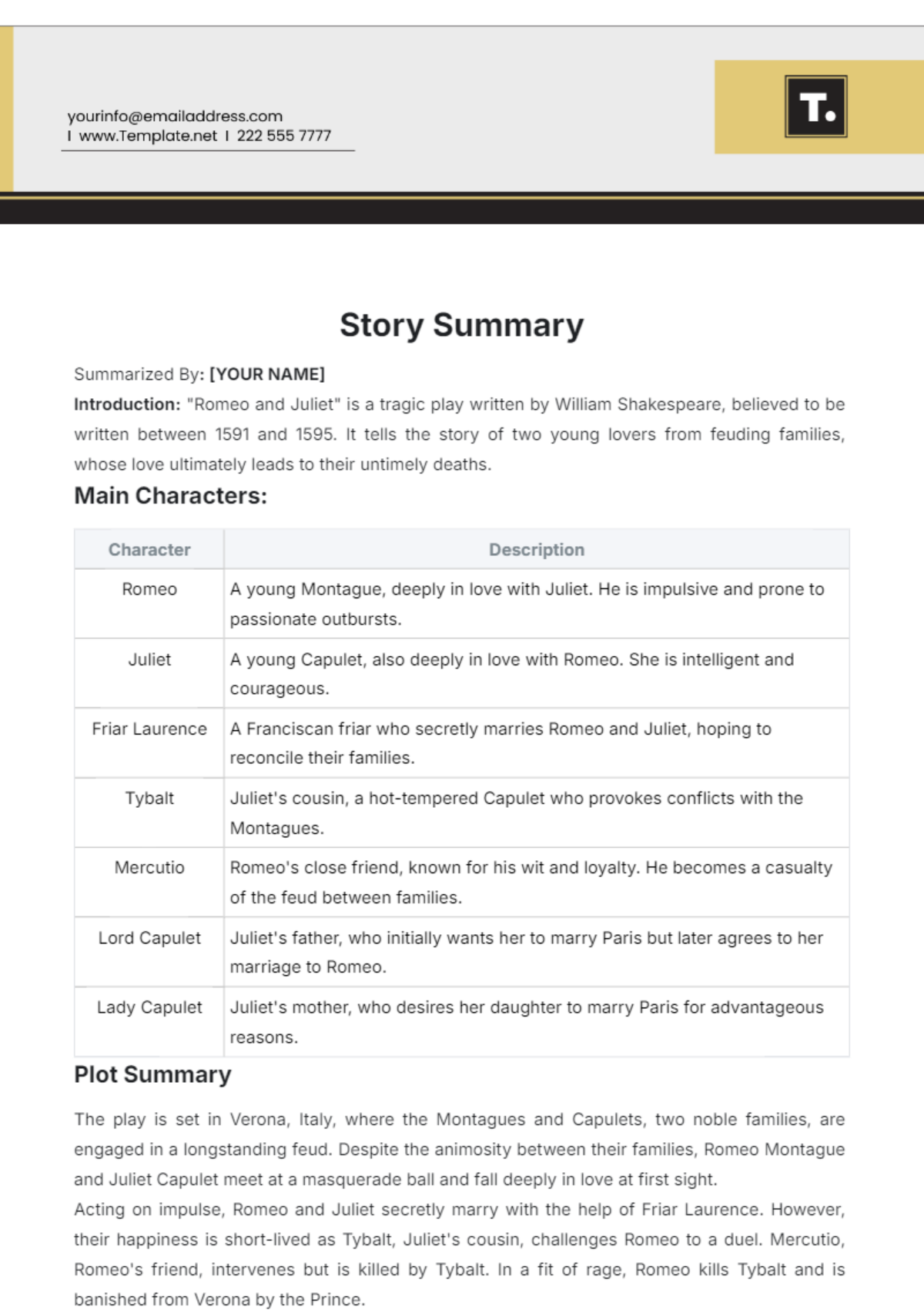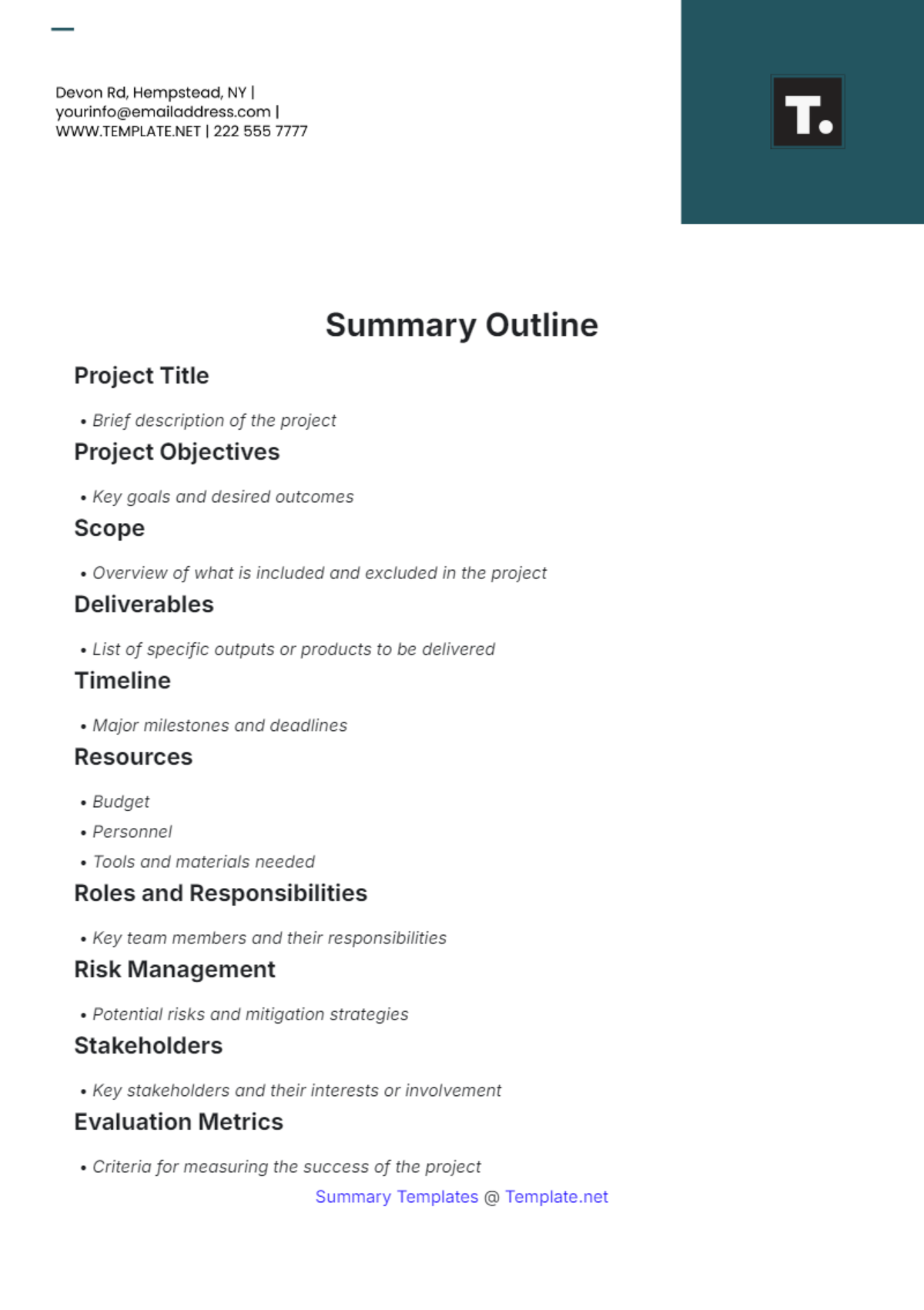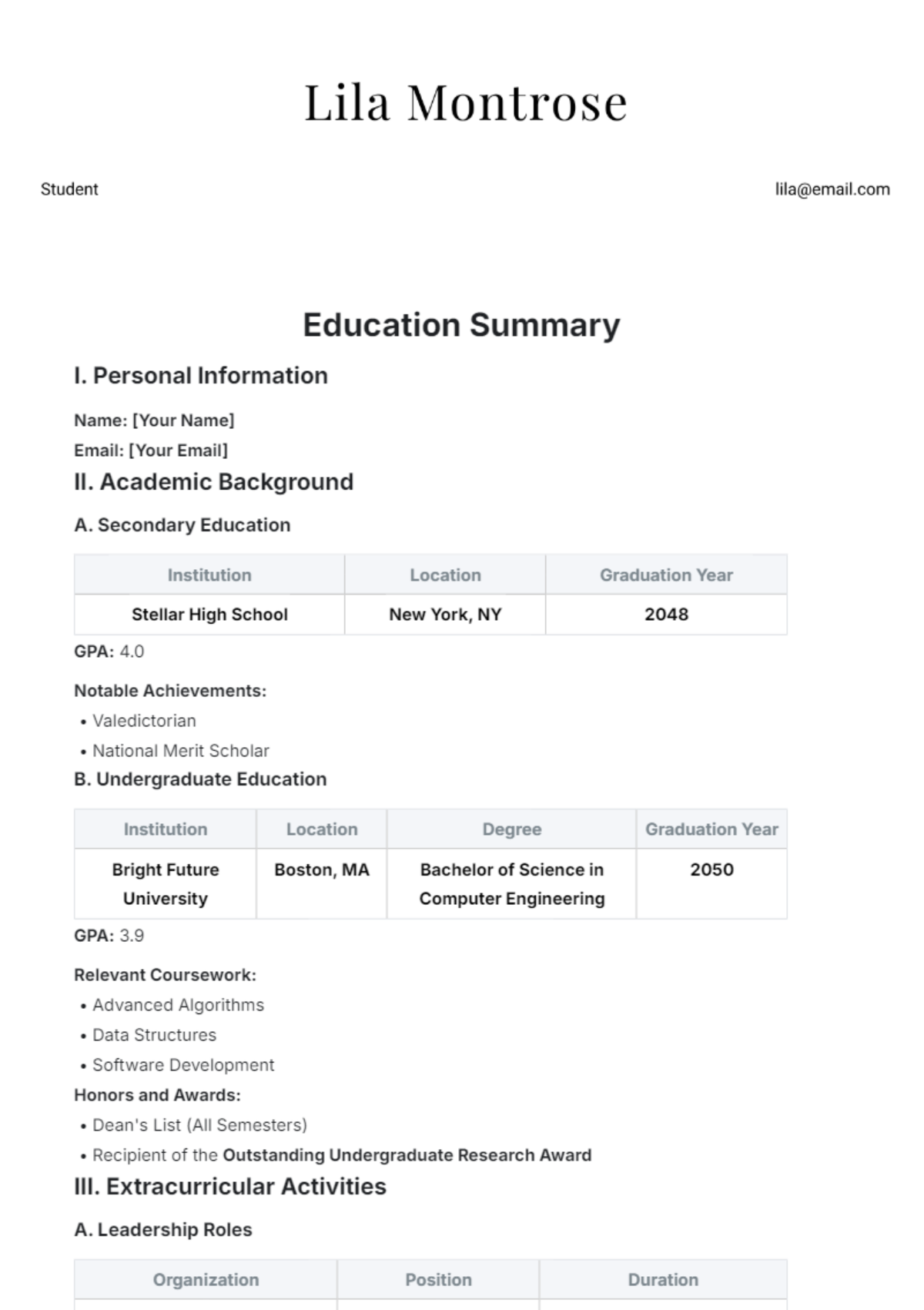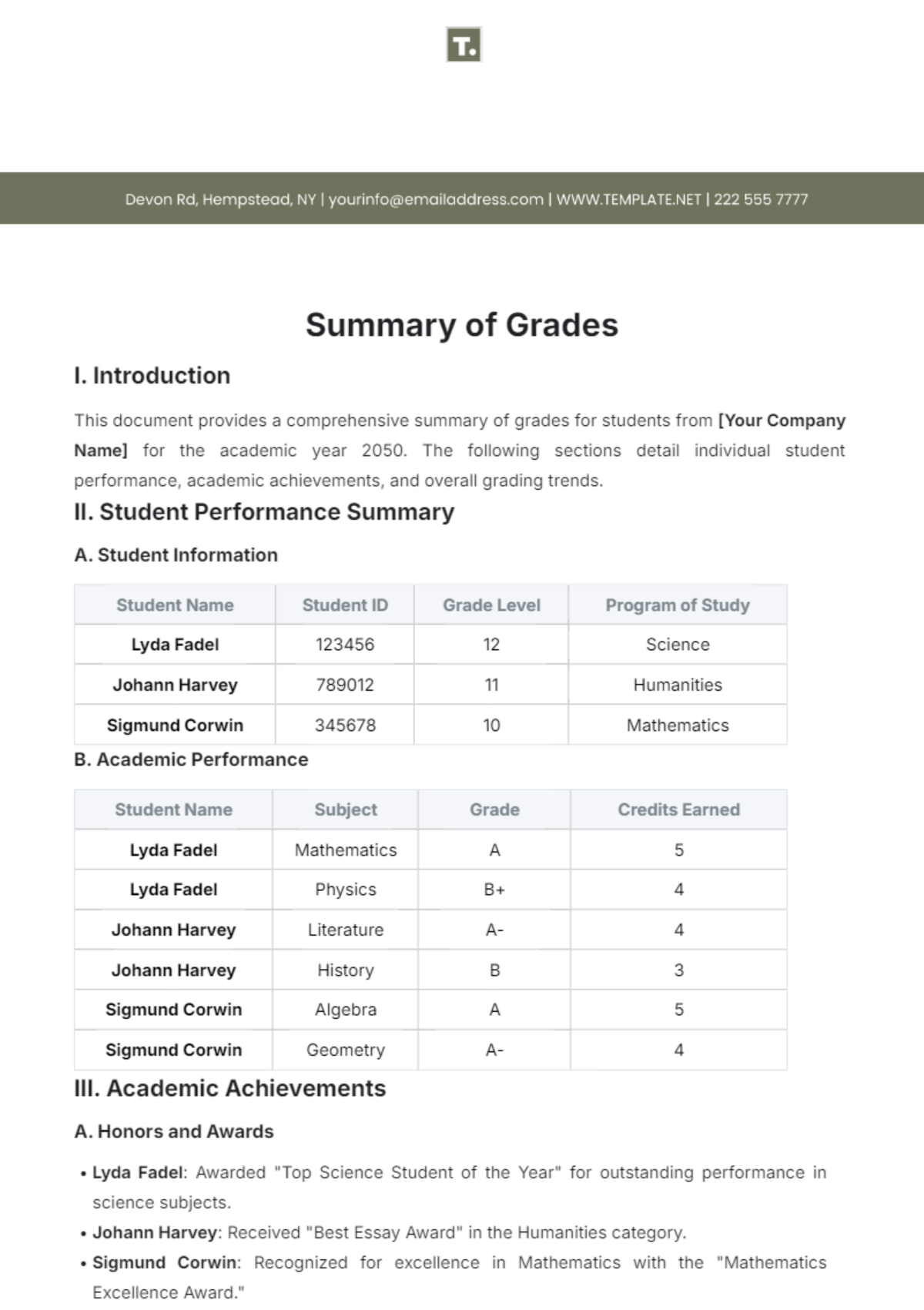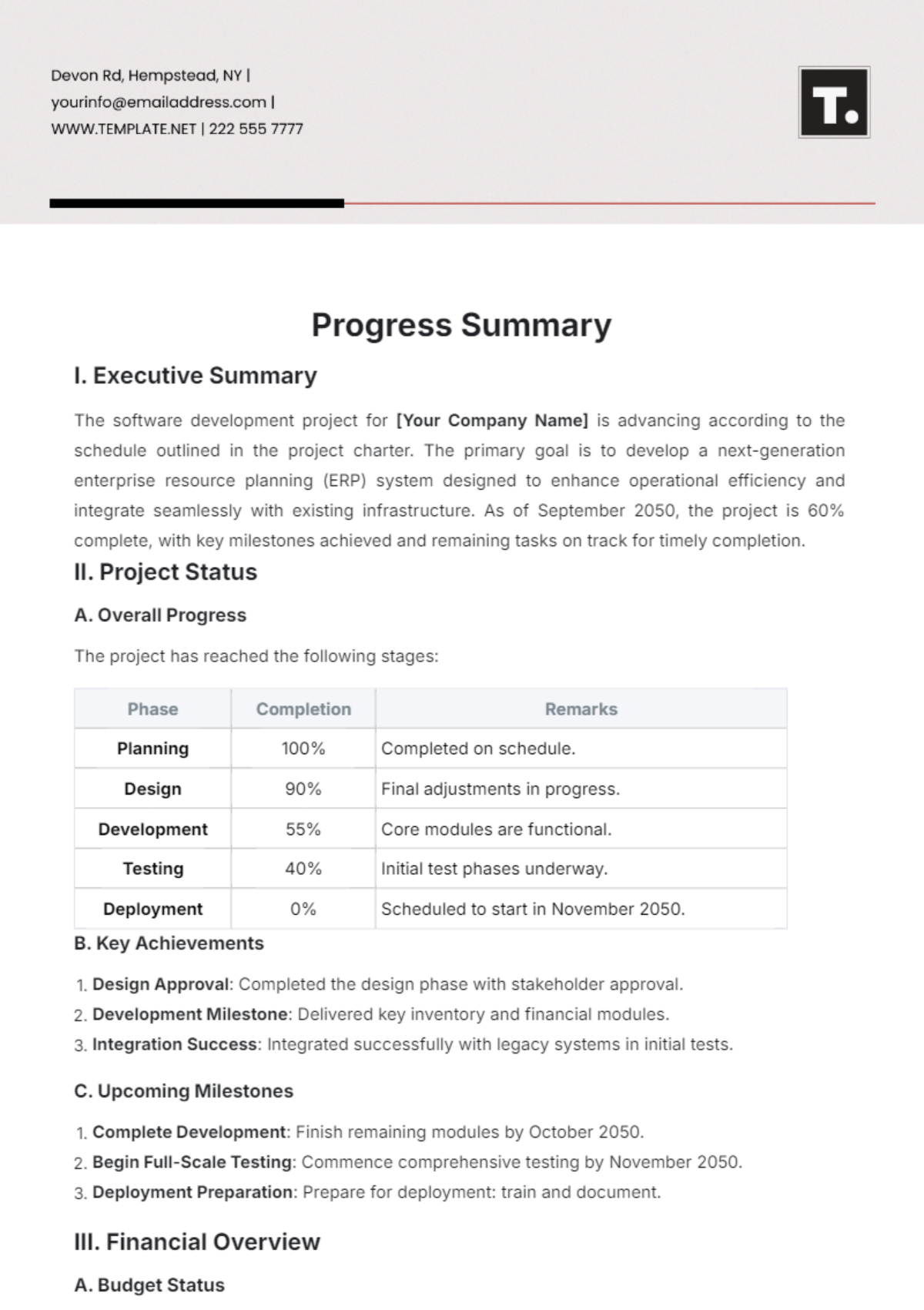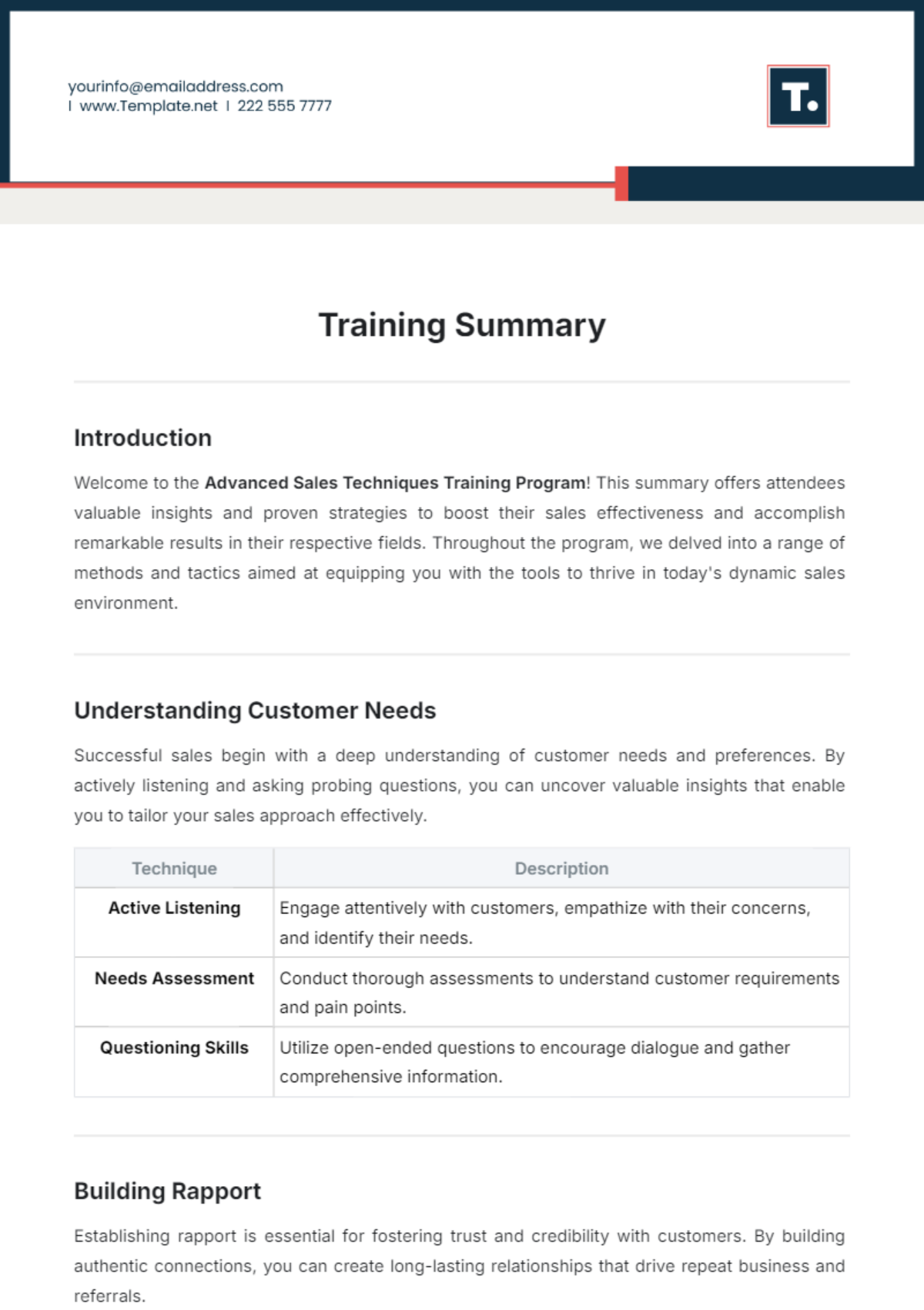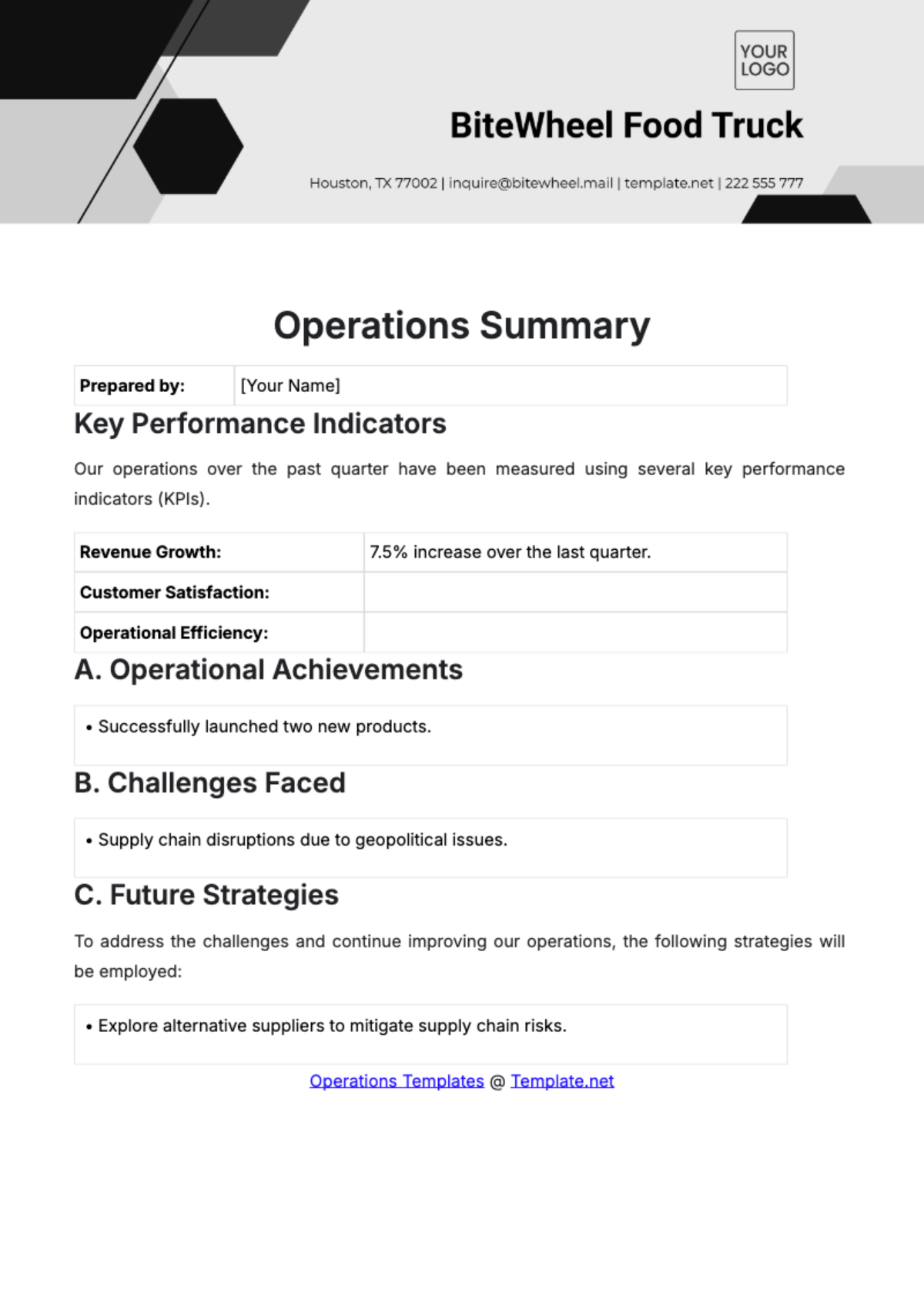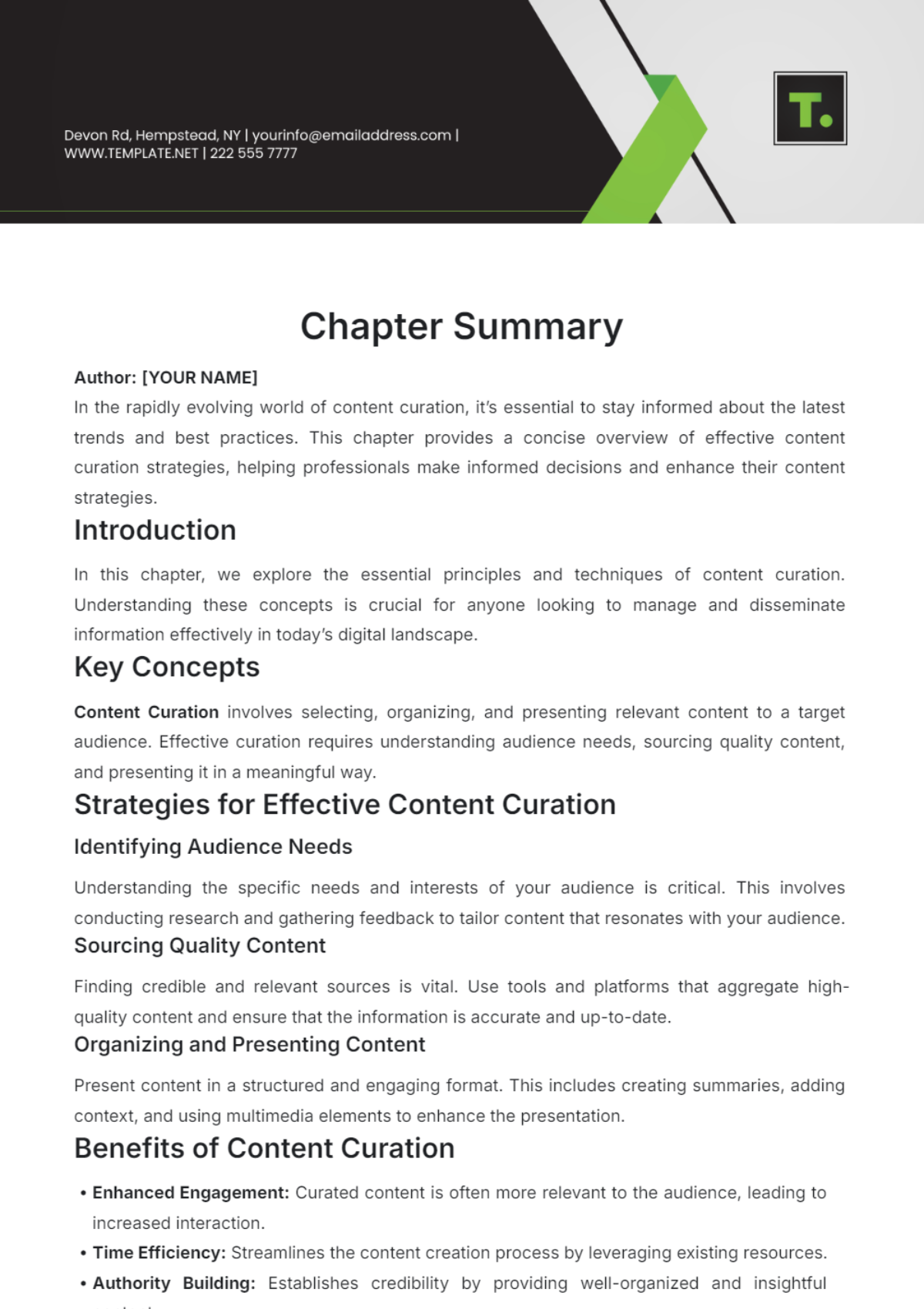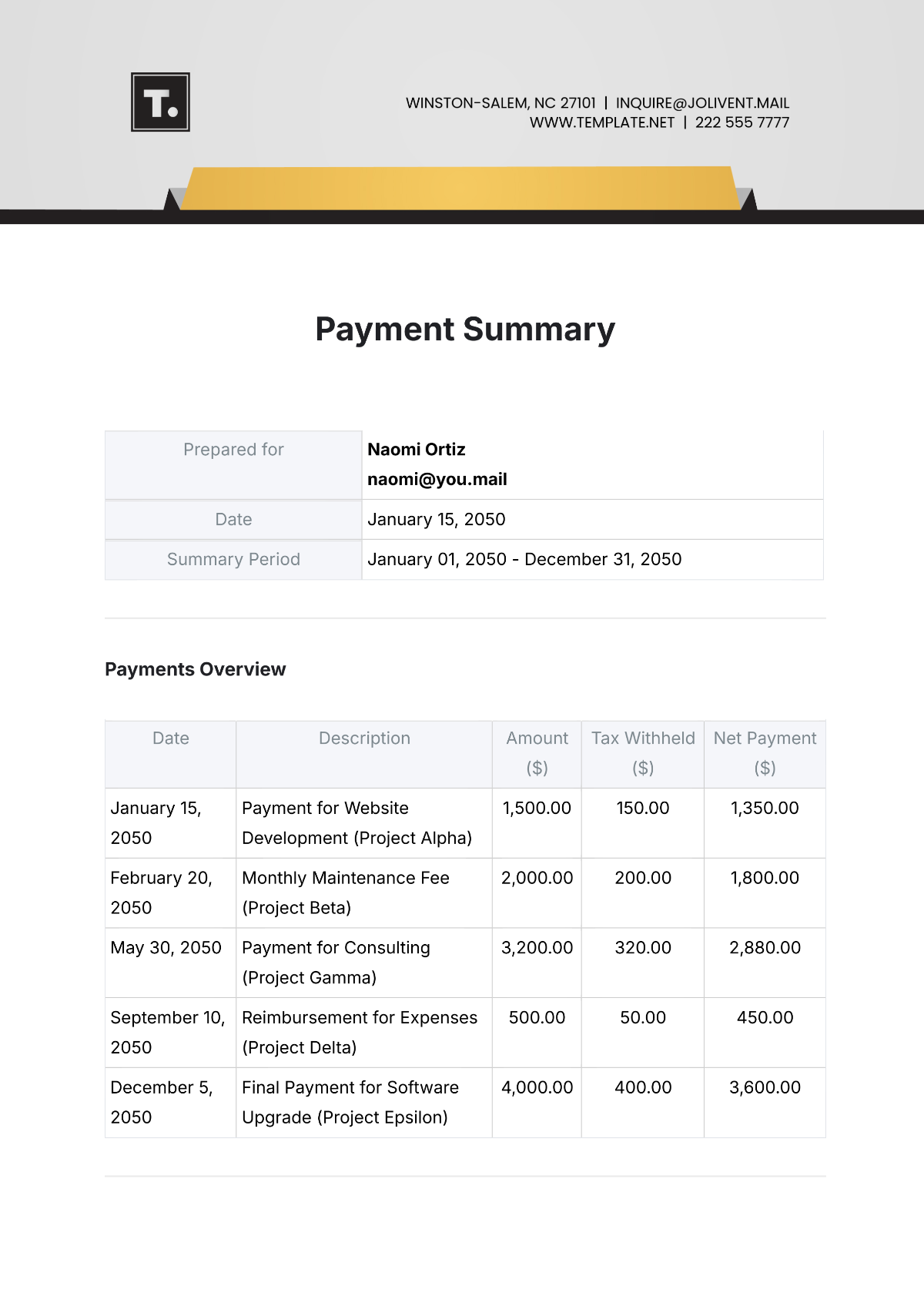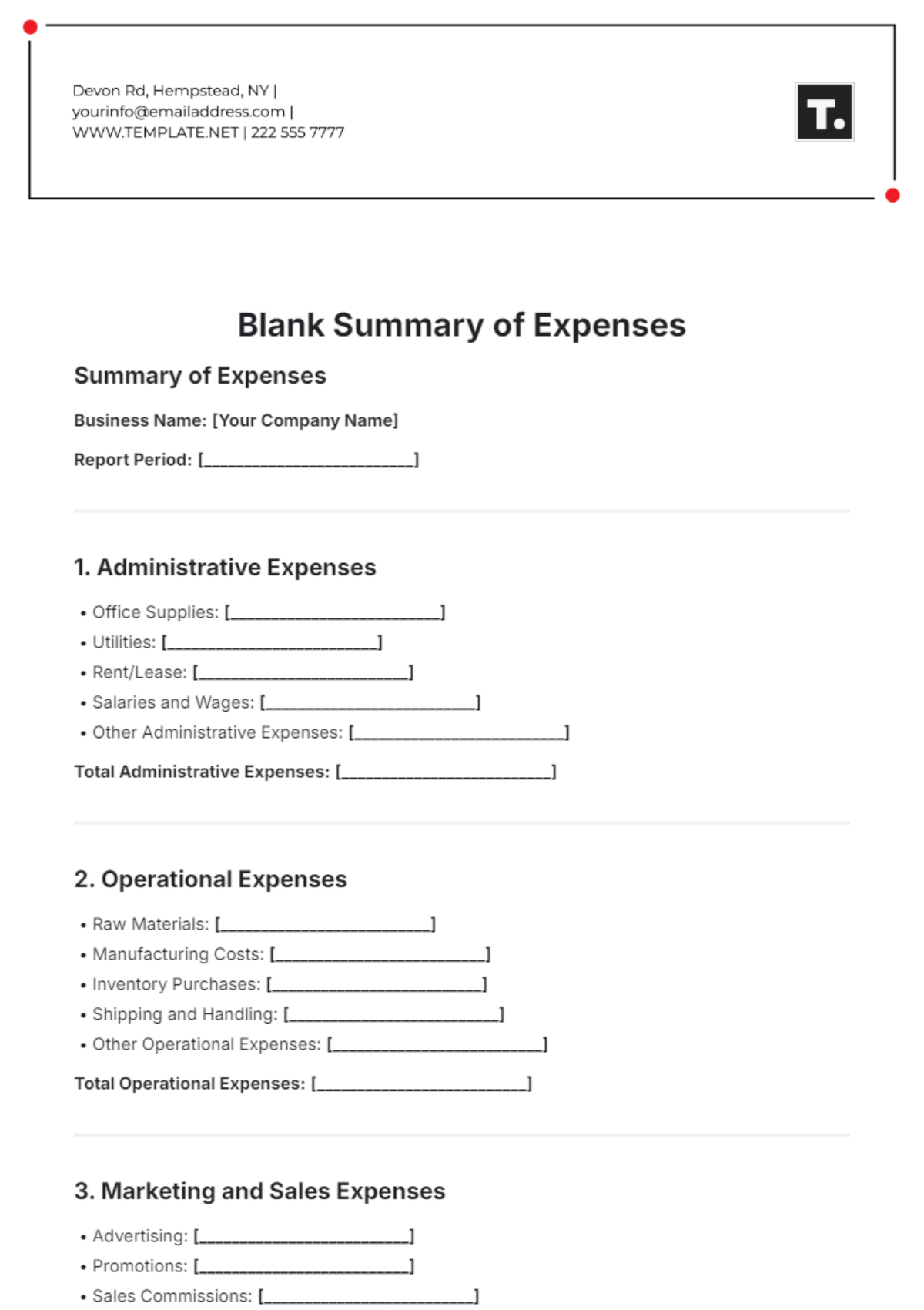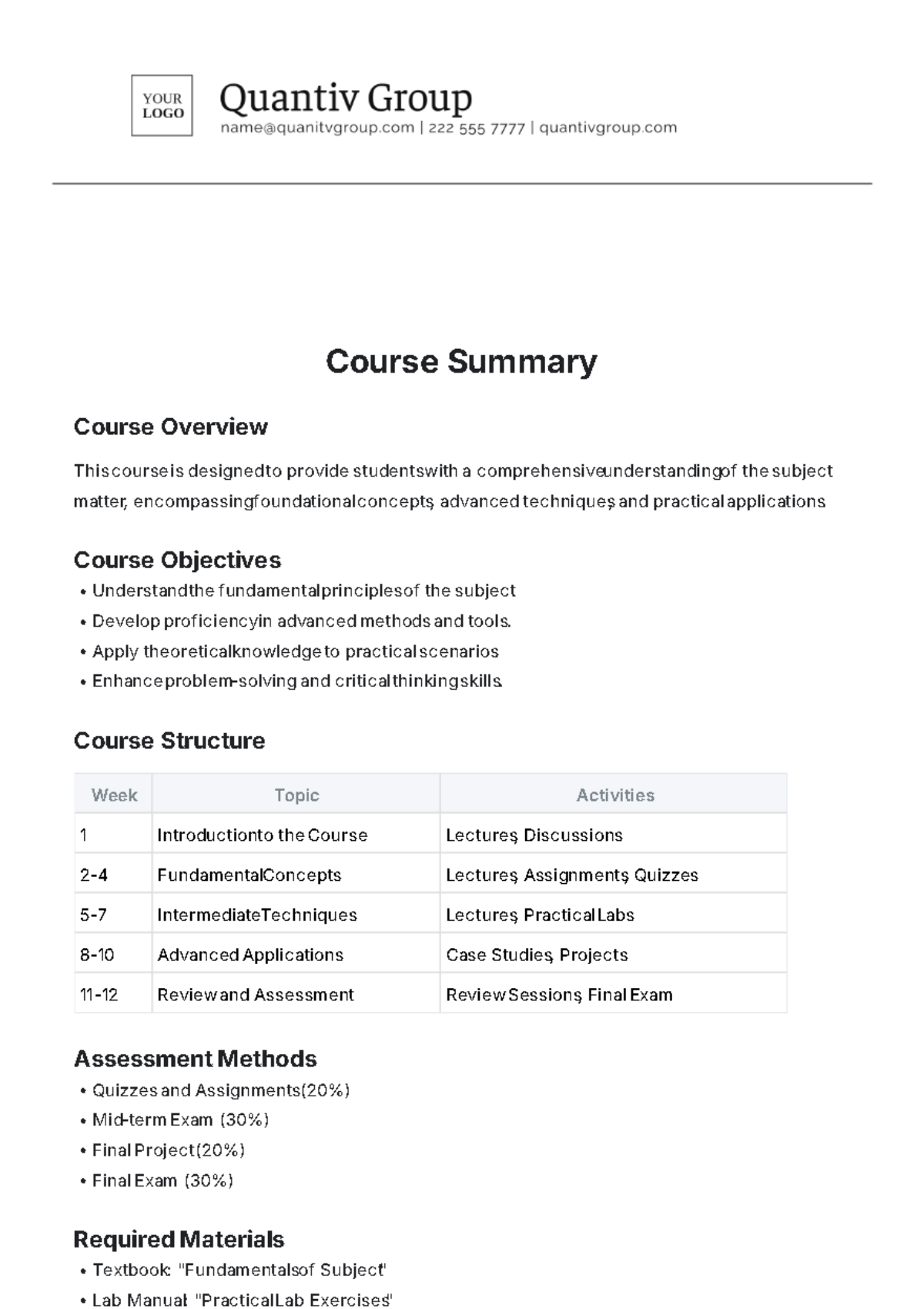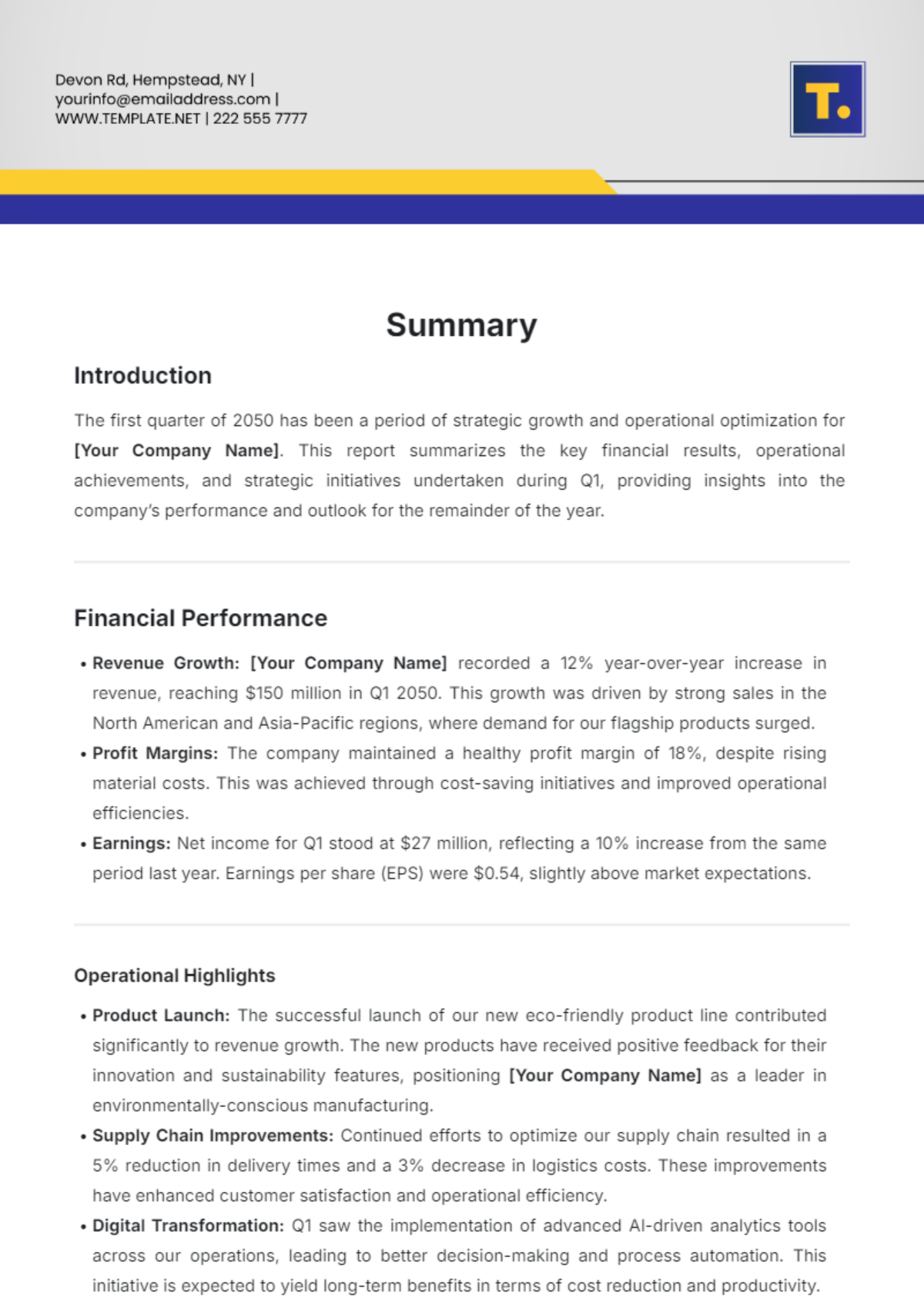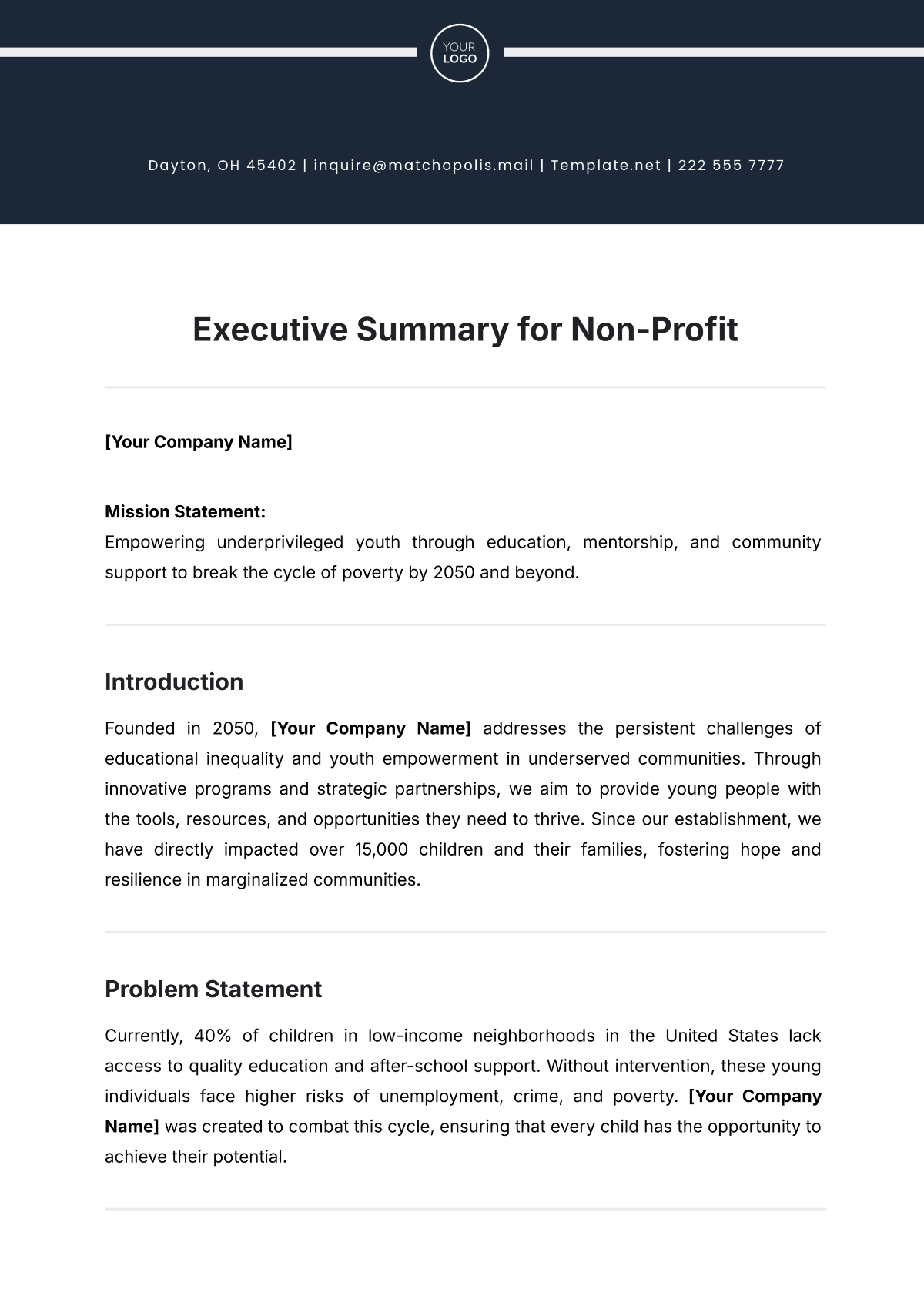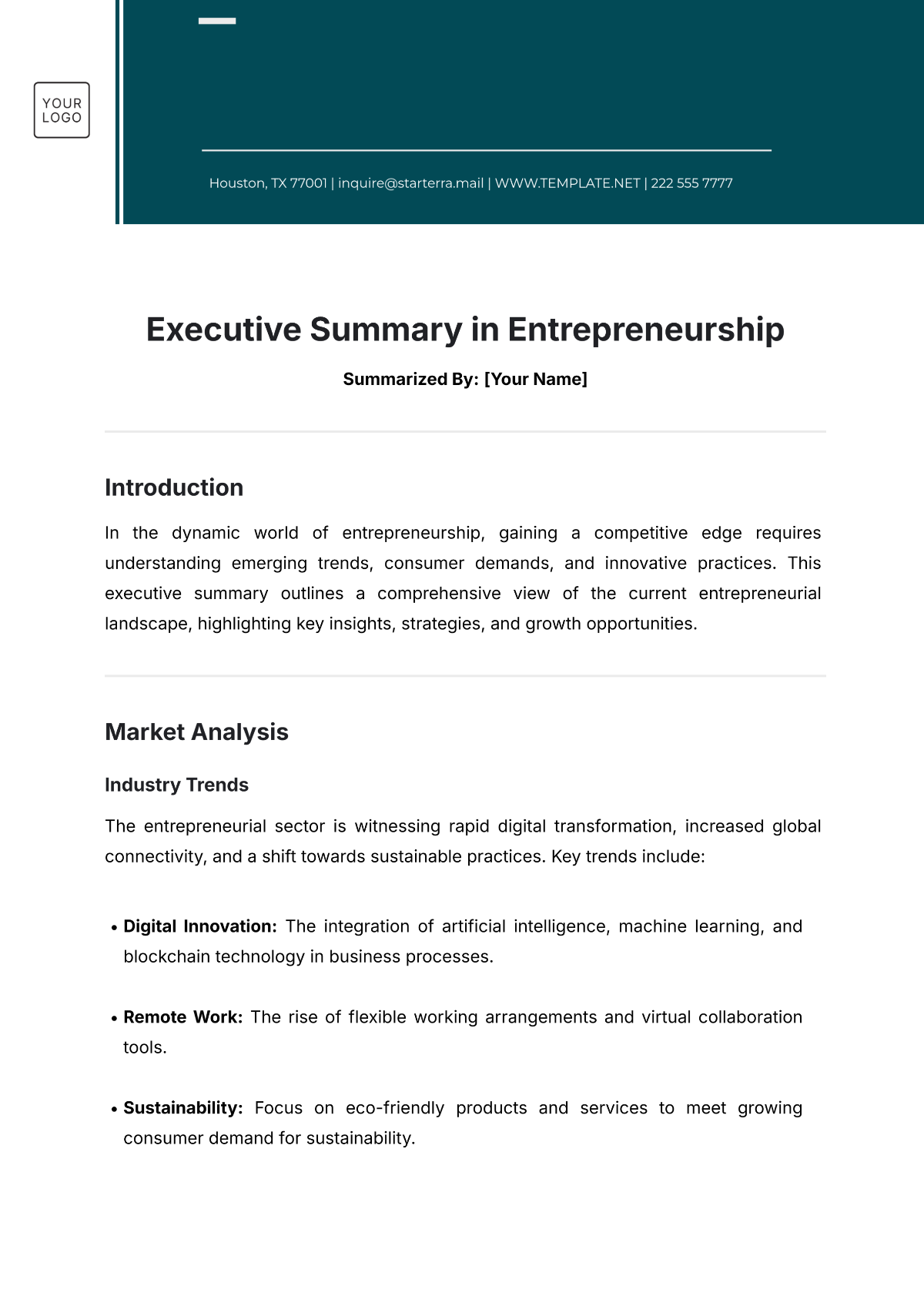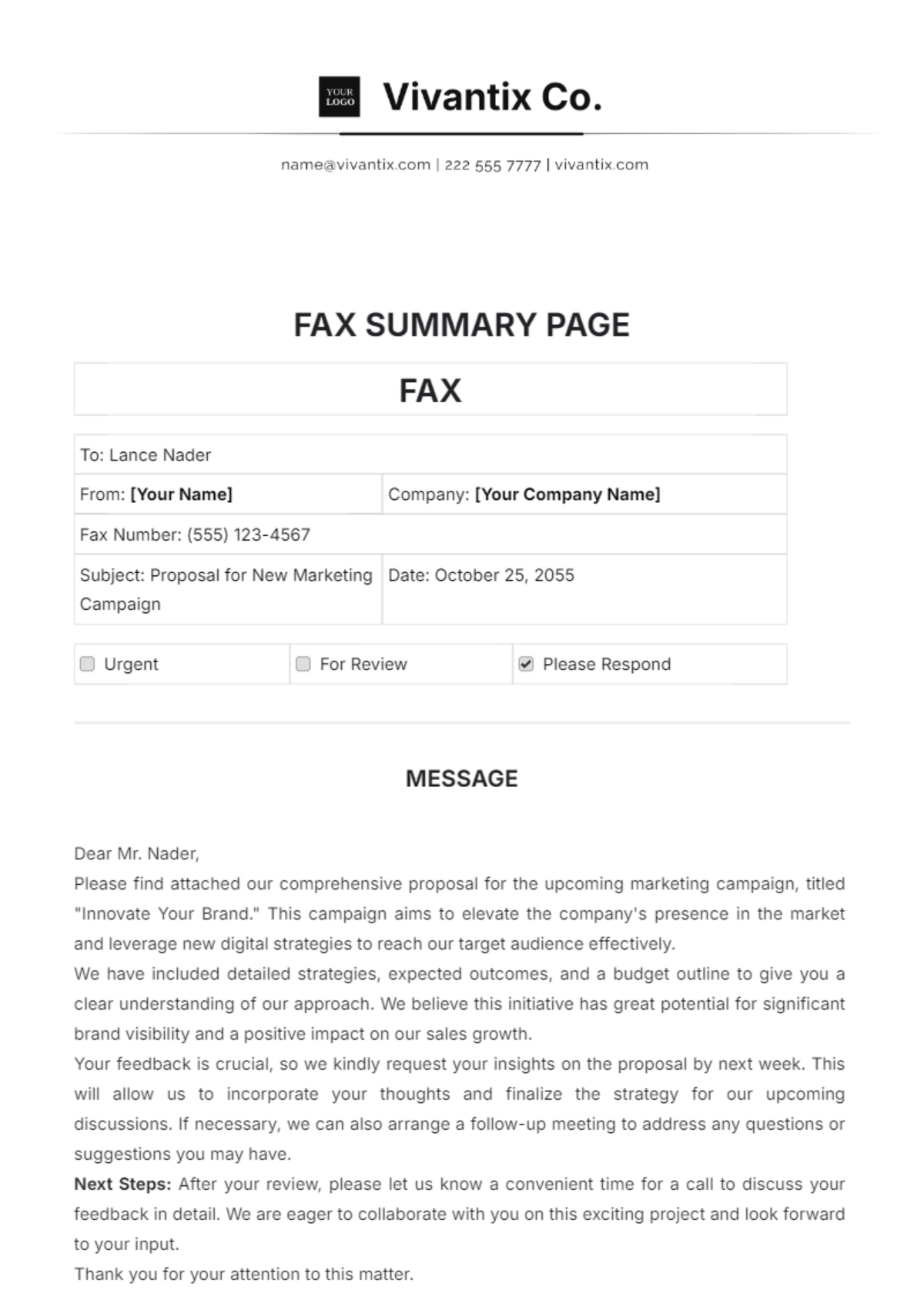Project Management Executive Summary
[YOURCOMPANY LOGO]
Prepared by: [YOUR NAME]
[YOUR POSITION]
[YOUR COMPANY NAME]
Date: [DATE]
Introduction:
This executive summary provides an overview of the project to implement a new Customer Relationship Management (CRM) system for [YOUR COMPANY NAME], a multinational corporation aiming to enhance customer engagement, streamline processes, and drive business growth. The project's objectives, scope, timeline, key findings, and key deliverables are outlined to facilitate informed decision-making by project stakeholders and decision-makers.
Project Objectives:
The primary objectives of the CRM system implementation project are as follows:
Enhanced Customer Experience: Implement a user-friendly CRM platform to improve customer interactions, personalize communication, and foster stronger relationships.
Streamlined Processes: Automate manual tasks, integrate data across departments, and optimize workflows to increase operational efficiency and productivity.
Data-driven Insights: Enable data analytics and reporting capabilities to gain actionable insights into customer behavior, preferences, and trends.
Scalability and Integration: Deploy a scalable CRM solution that seamlessly integrates with existing systems and accommodates future business growth and expansion.
Project Scope:
The scope of the CRM system implementation project encompasses the following key components:
Phase | Description |
|---|---|
1. Planning | Conduct needs analysis, define project scope, establish goals, and assemble project team. |
2. Requirements Gathering | Identify business requirements, user needs, and system functionalities through stakeholder consultations and workshops. |
3. Vendor Selection | Evaluate CRM software vendors, conduct product demonstrations, and negotiate contracts. |
4. System Configuration | Customize CRM platform to align with business processes, configure user roles, and data migration planning. |
5. Testing and Quality Assurance | Conduct comprehensive system testing, user acceptance testing (UAT), and quality assurance to ensure system functionality and reliability. |
6. Training and Change Management | Develop training materials, conduct user training sessions, and implement change management strategies to facilitate adoption. |
7. Deployment and Go-live | Roll out CRM system to end-users, monitor system performance, and provide ongoing support and maintenance. |
Key Findings:
The key findings of the CRM system implementation project are as follows:
Improved Customer Engagement: The new CRM system significantly enhanced customer engagement through personalized communication, targeted marketing campaigns, and proactive customer service.
Enhanced Operational Efficiency: Automation of manual processes and integration of data across departments streamlined operations, reduced redundancies, and improved overall efficiency.
Data-driven Decision-making: The CRM system provided actionable insights into customer behavior, preferences, and trends, empowering [YOUR COMPANY NAME] to make informed decisions and tailor strategies accordingly.
Timeline:
The CRM system implementation project is scheduled to commence on [START DATE] and is anticipated to be completed by [END DATE]. The timeline is subject to adjustments based on project milestones, resource availability, and unforeseen challenges.
Key Deliverables:
The successful implementation of the CRM system will result in the following key deliverables:
Fully configured and customized CRM platform aligned with [YOUR COMPANY NAME]'s business requirements.
Comprehensive training materials and user documentation to facilitate user adoption and proficiency.
Seamless data migration from legacy systems to the new CRM platform without disruption to business operations.
Ongoing technical support and maintenance to ensure system functionality and performance post-deployment.
Conclusion:
The implementation of a new CRM system represents a strategic investment for [YOUR COMPANY NAME] to enhance customer relationships, streamline operations, and drive business growth. By leveraging modern technology and best practices in project management, we are confident in our ability to deliver a successful outcome that meets stakeholder expectations and fulfills organizational objectives.

